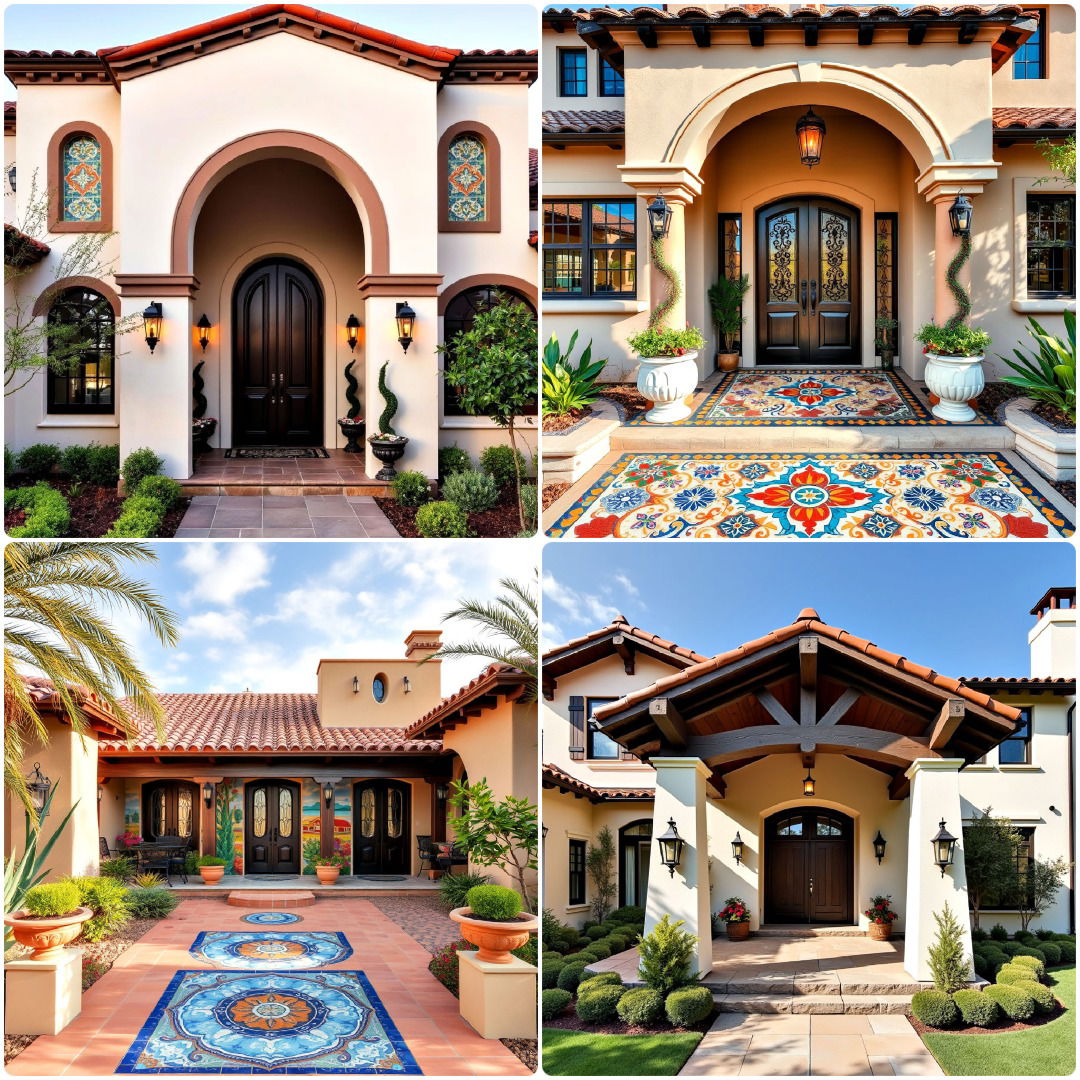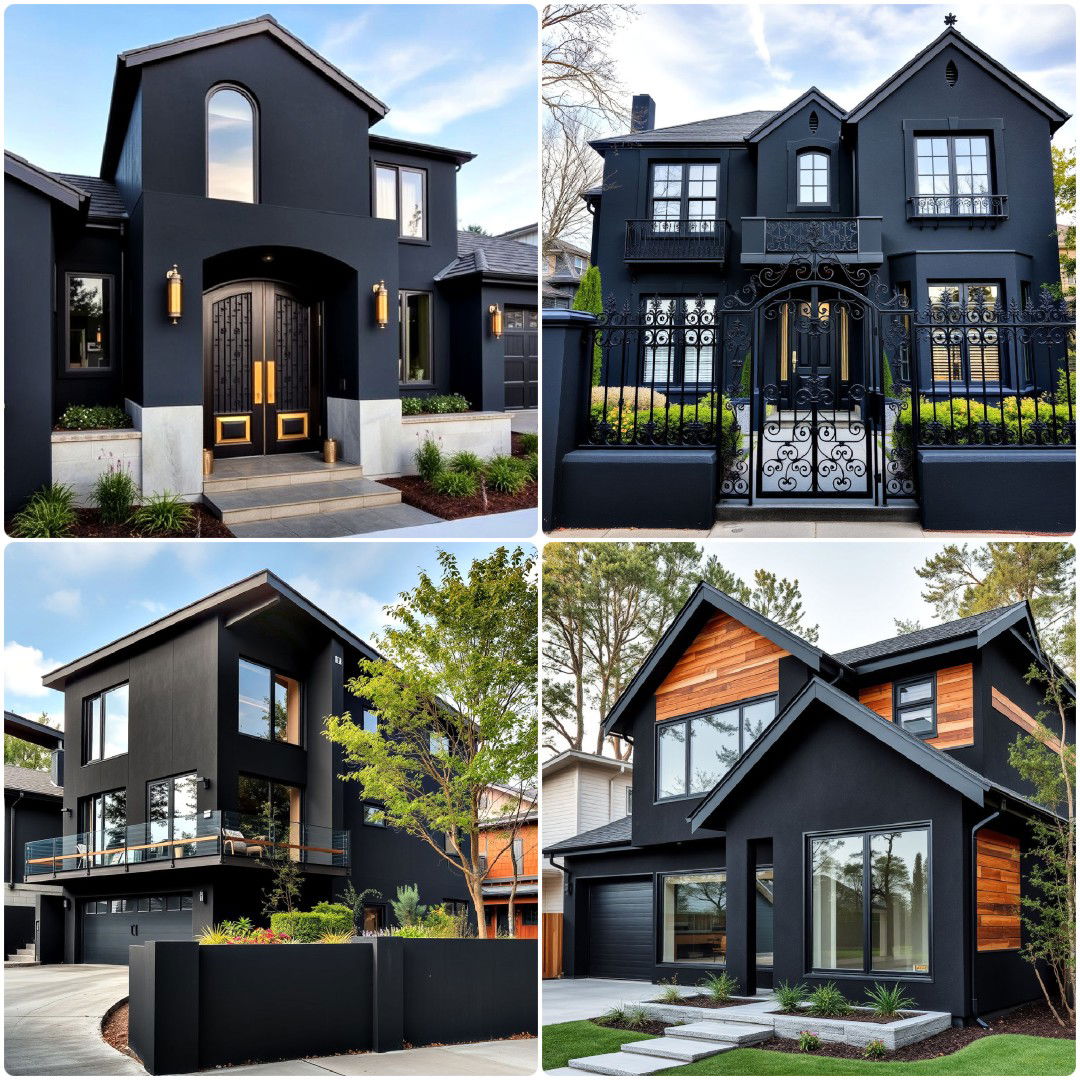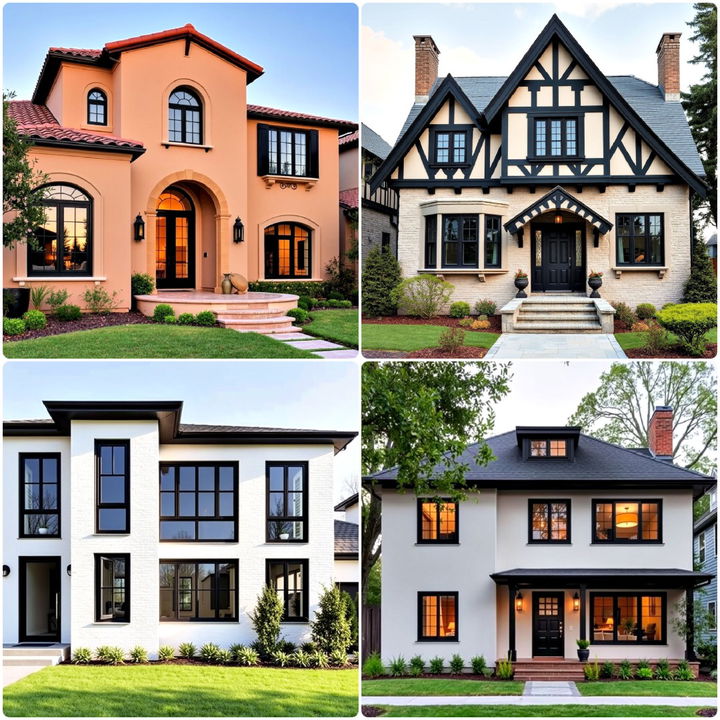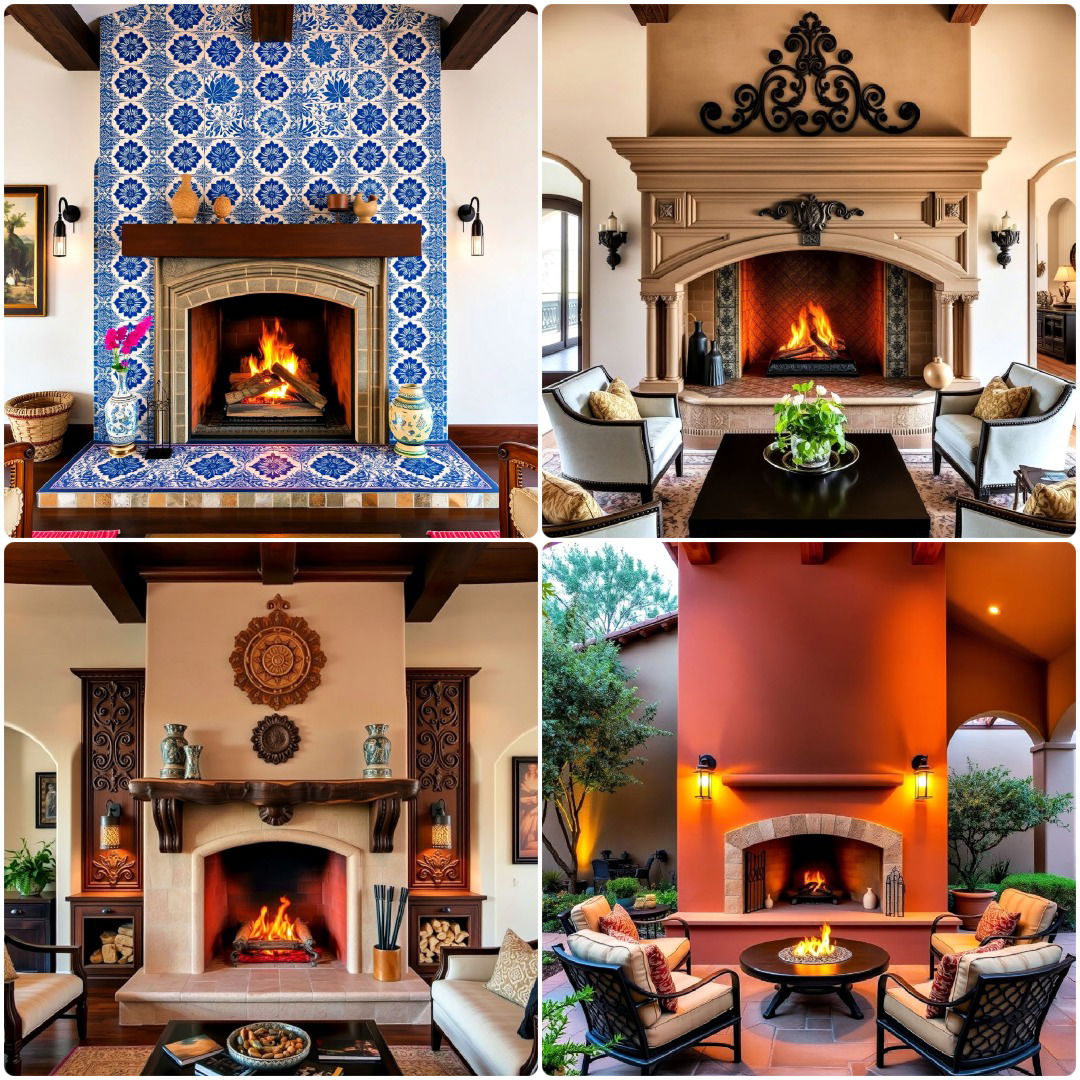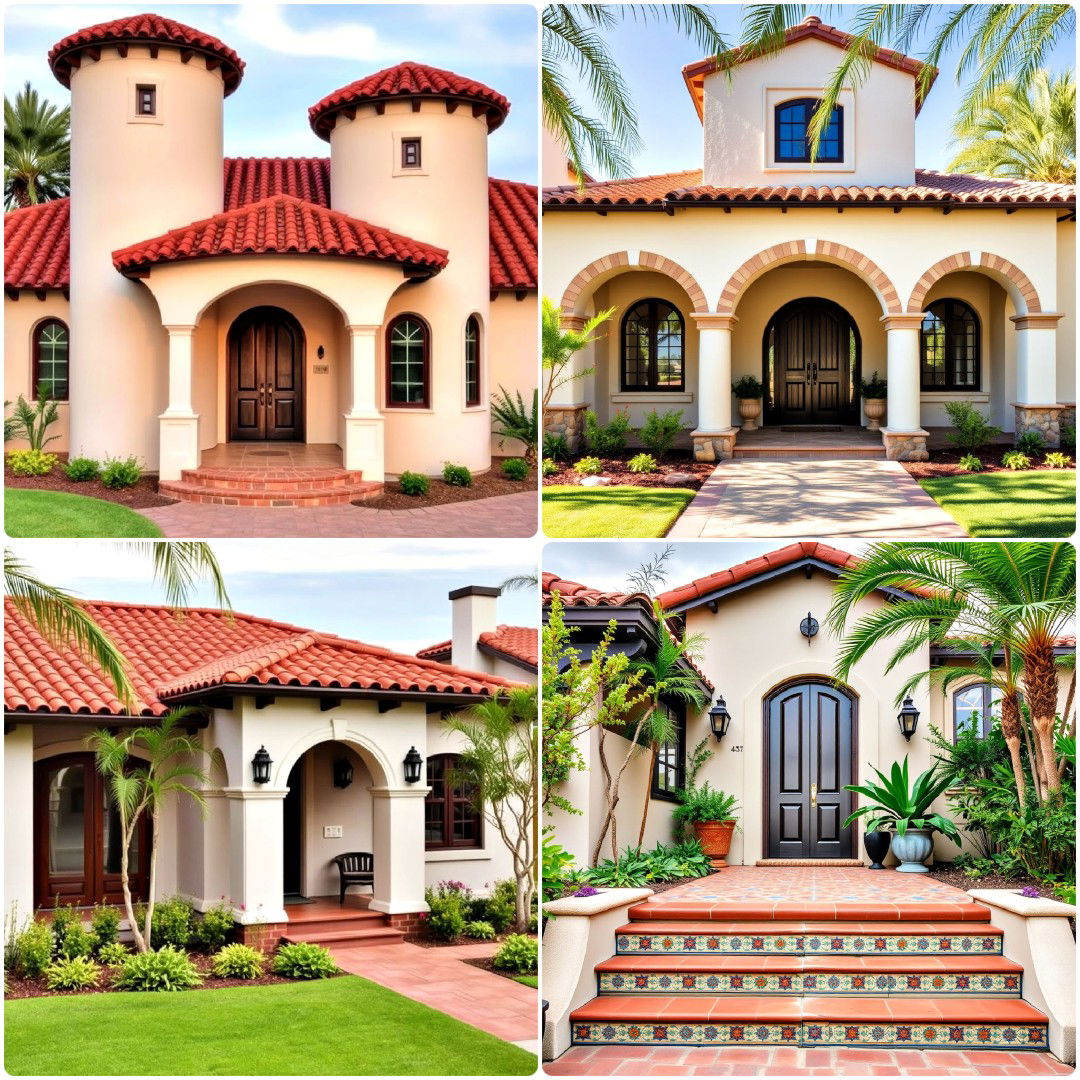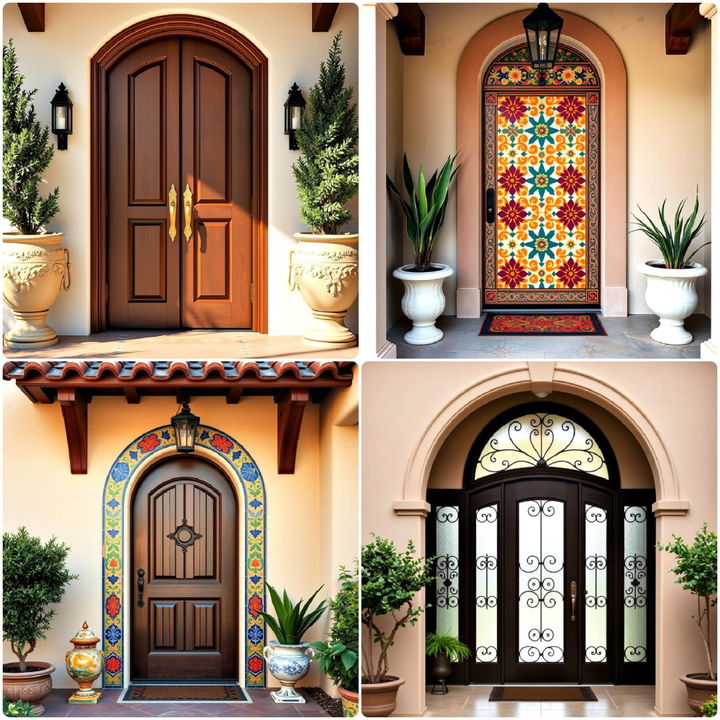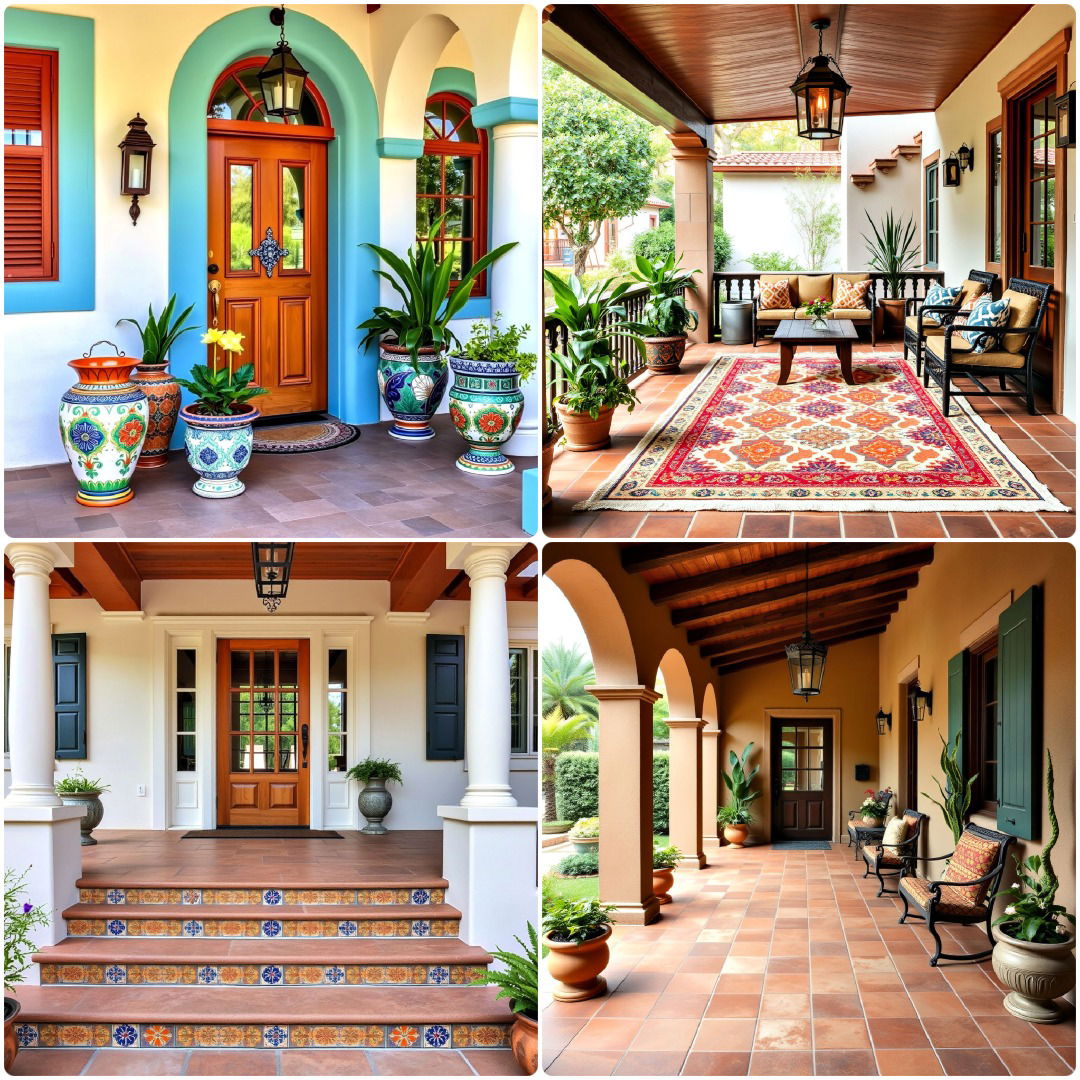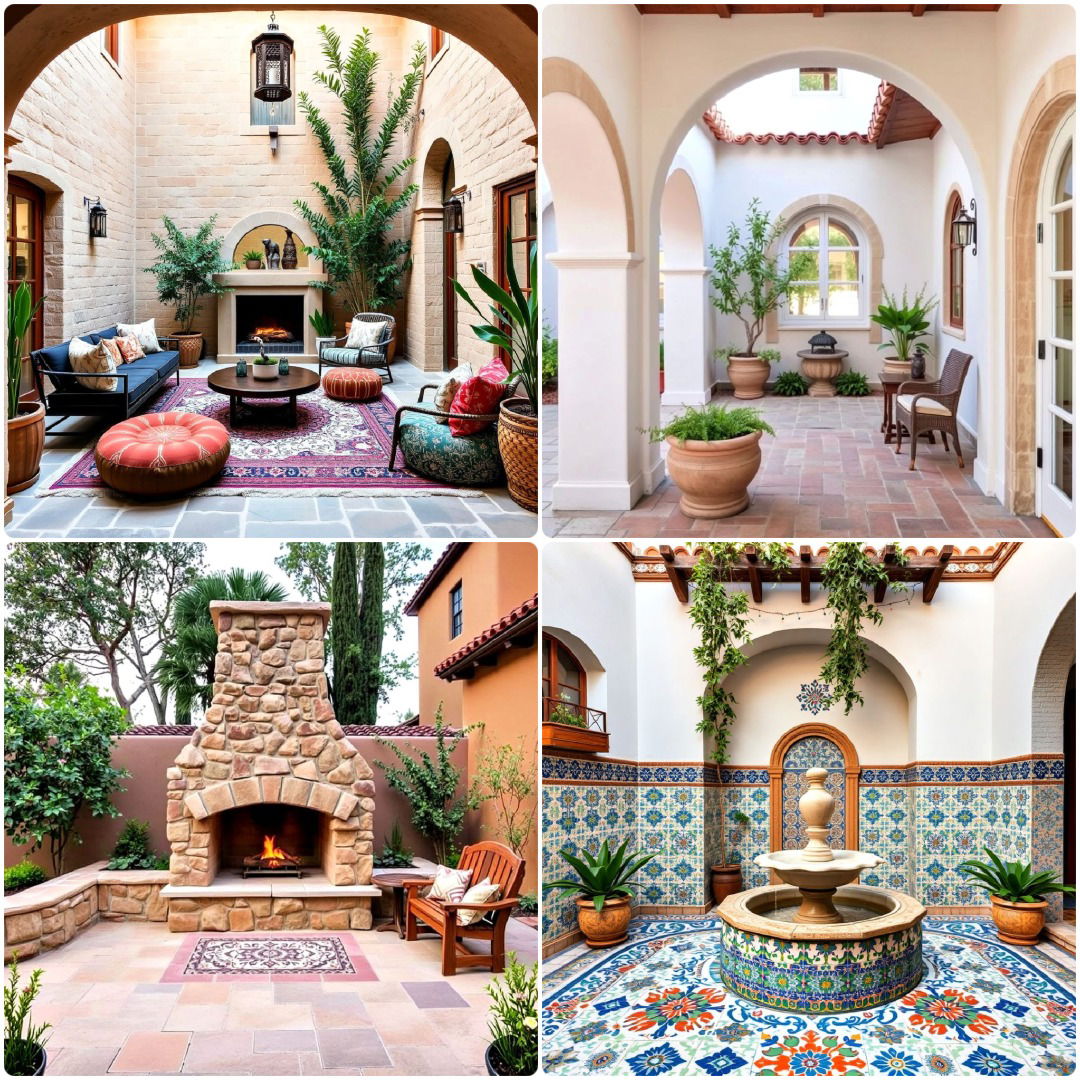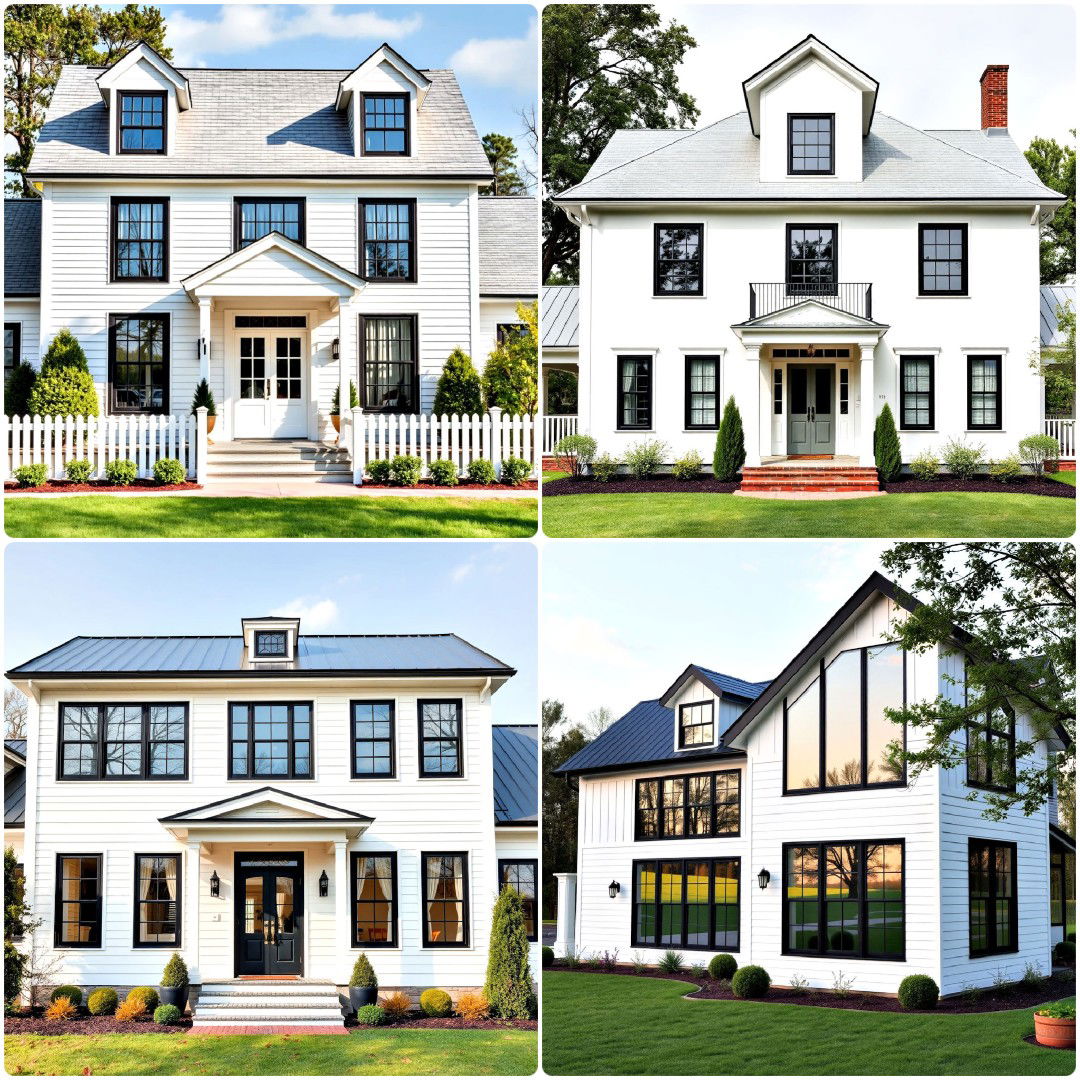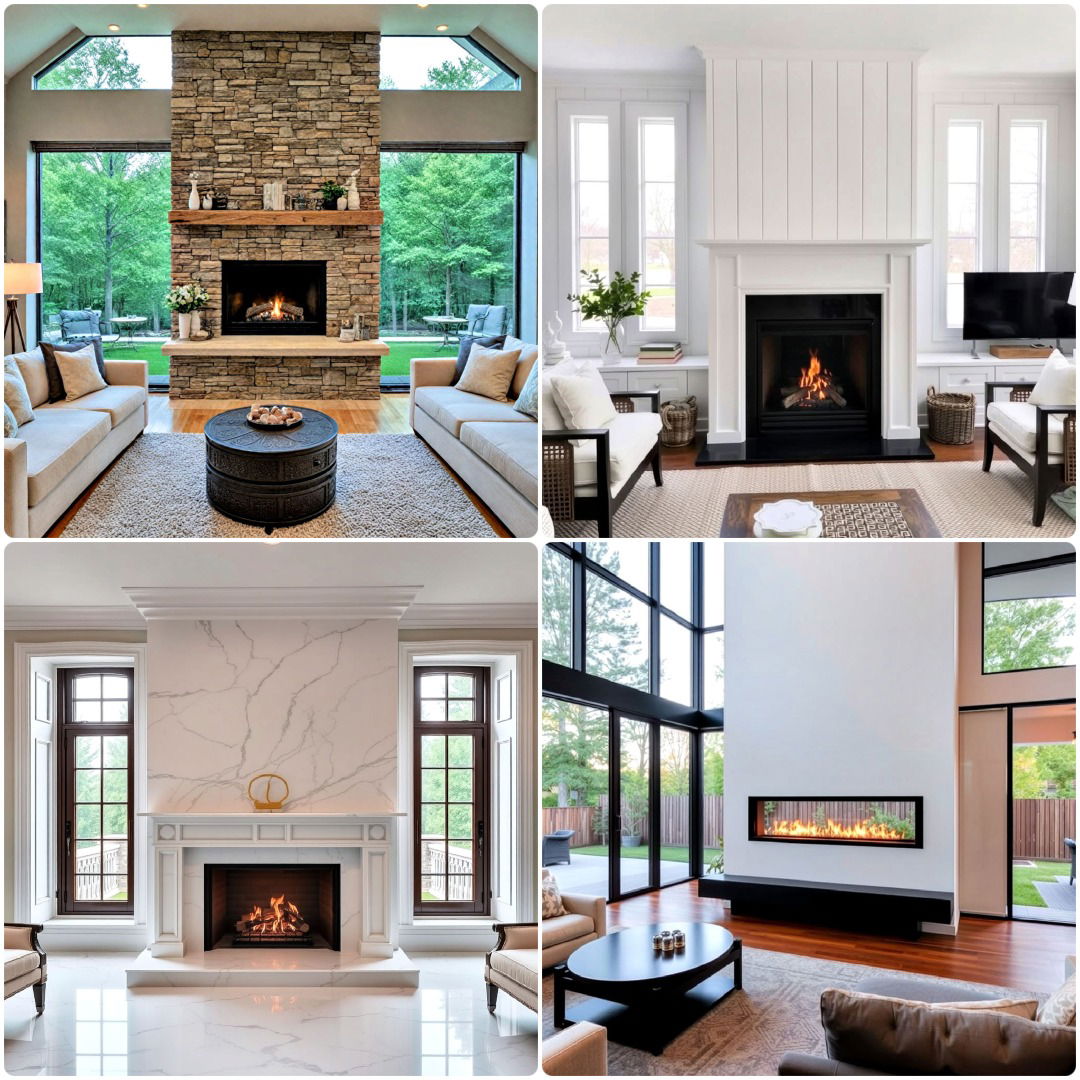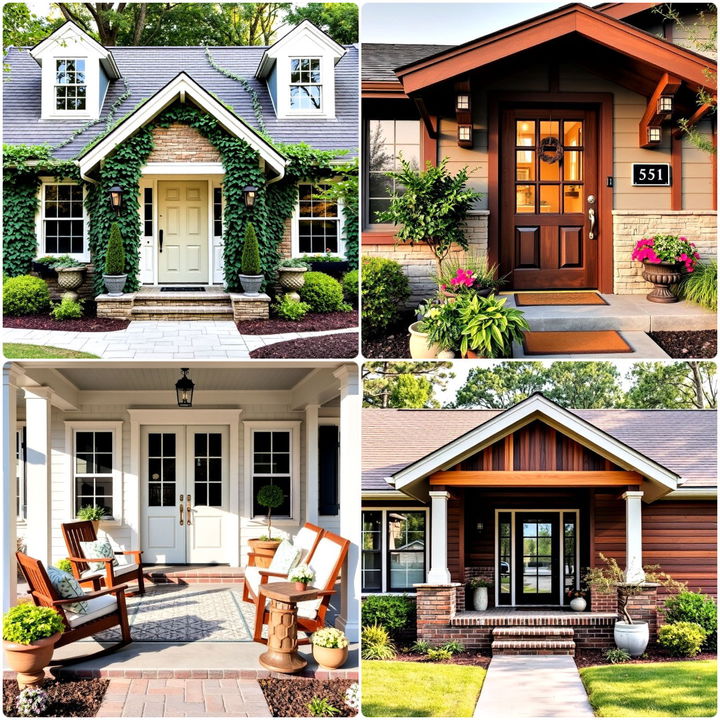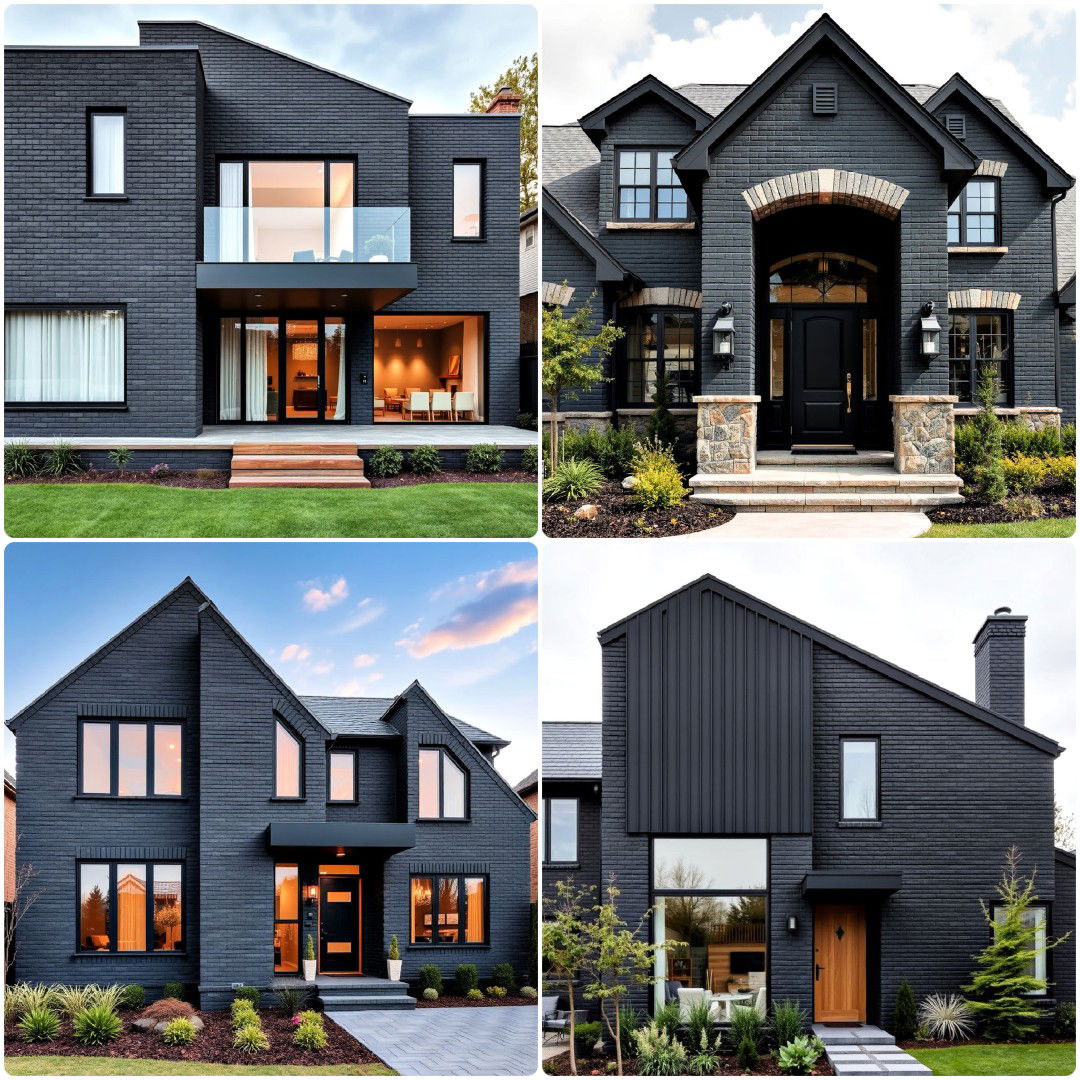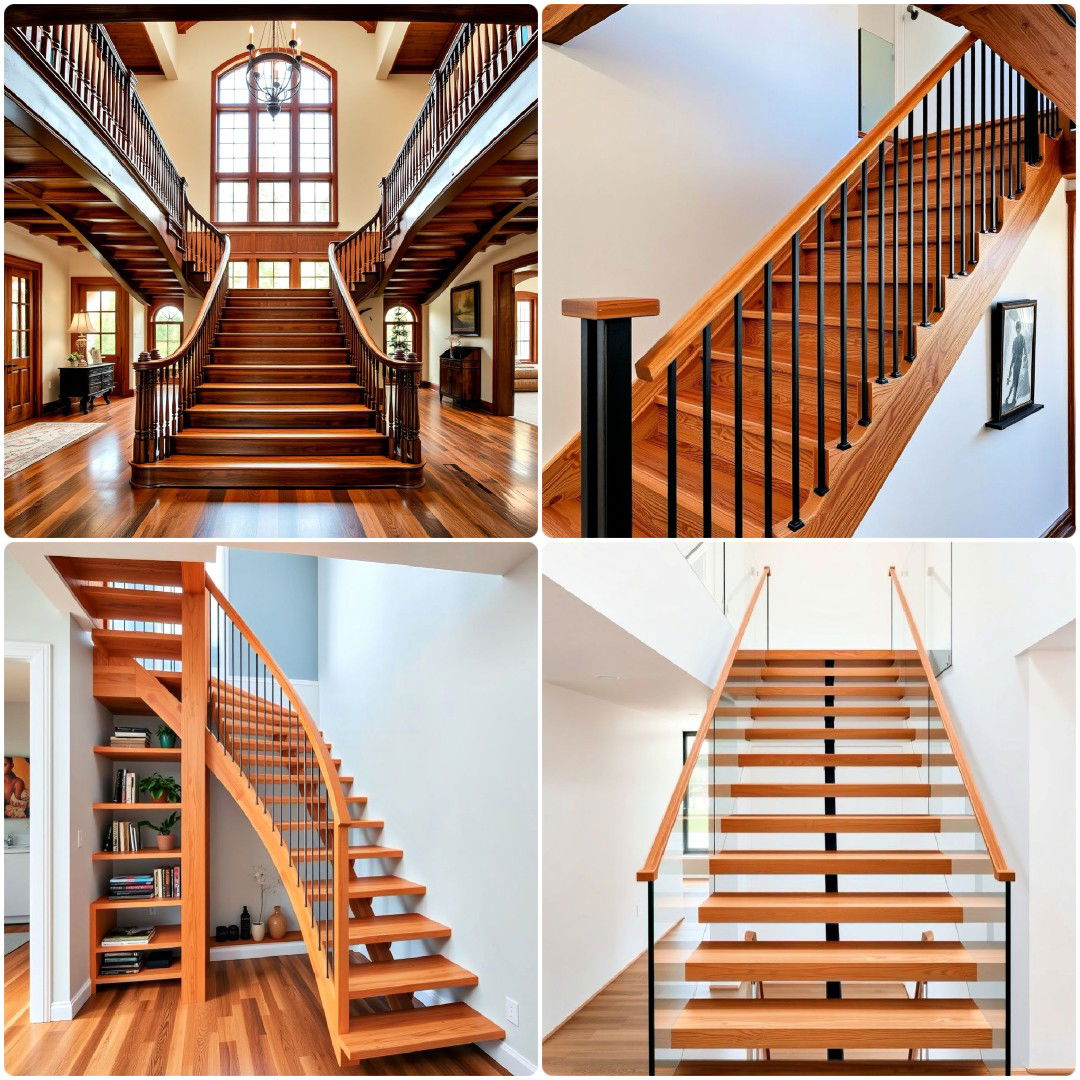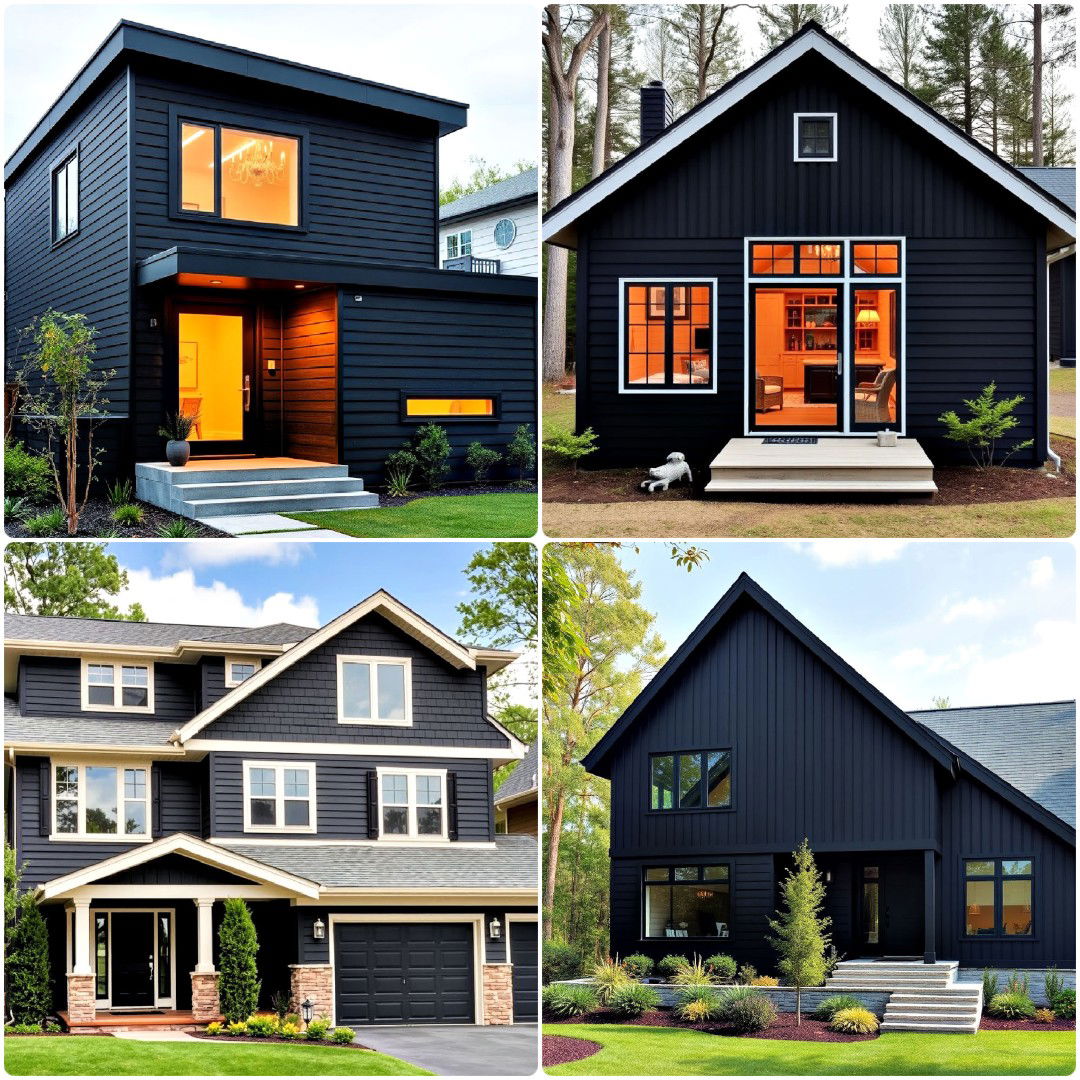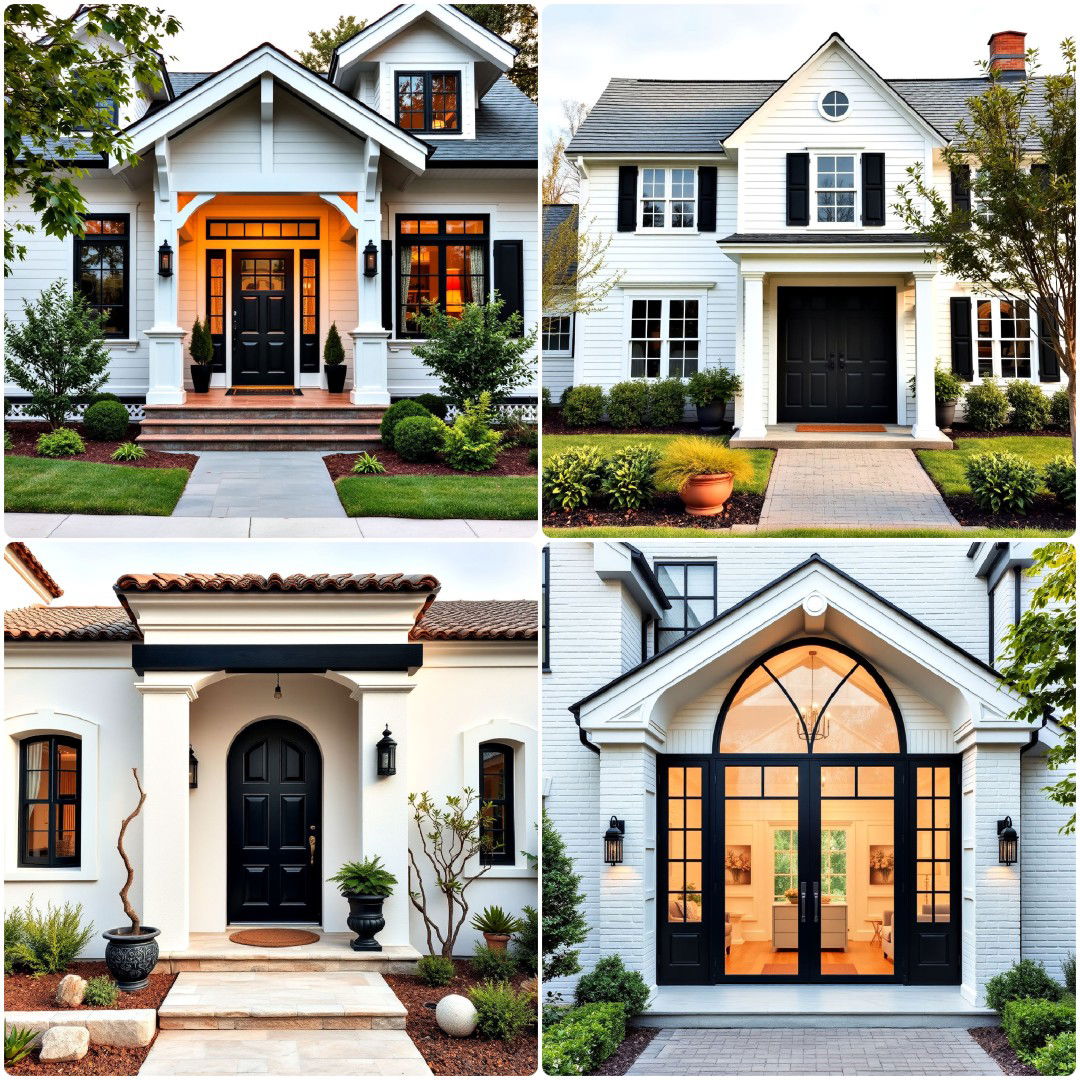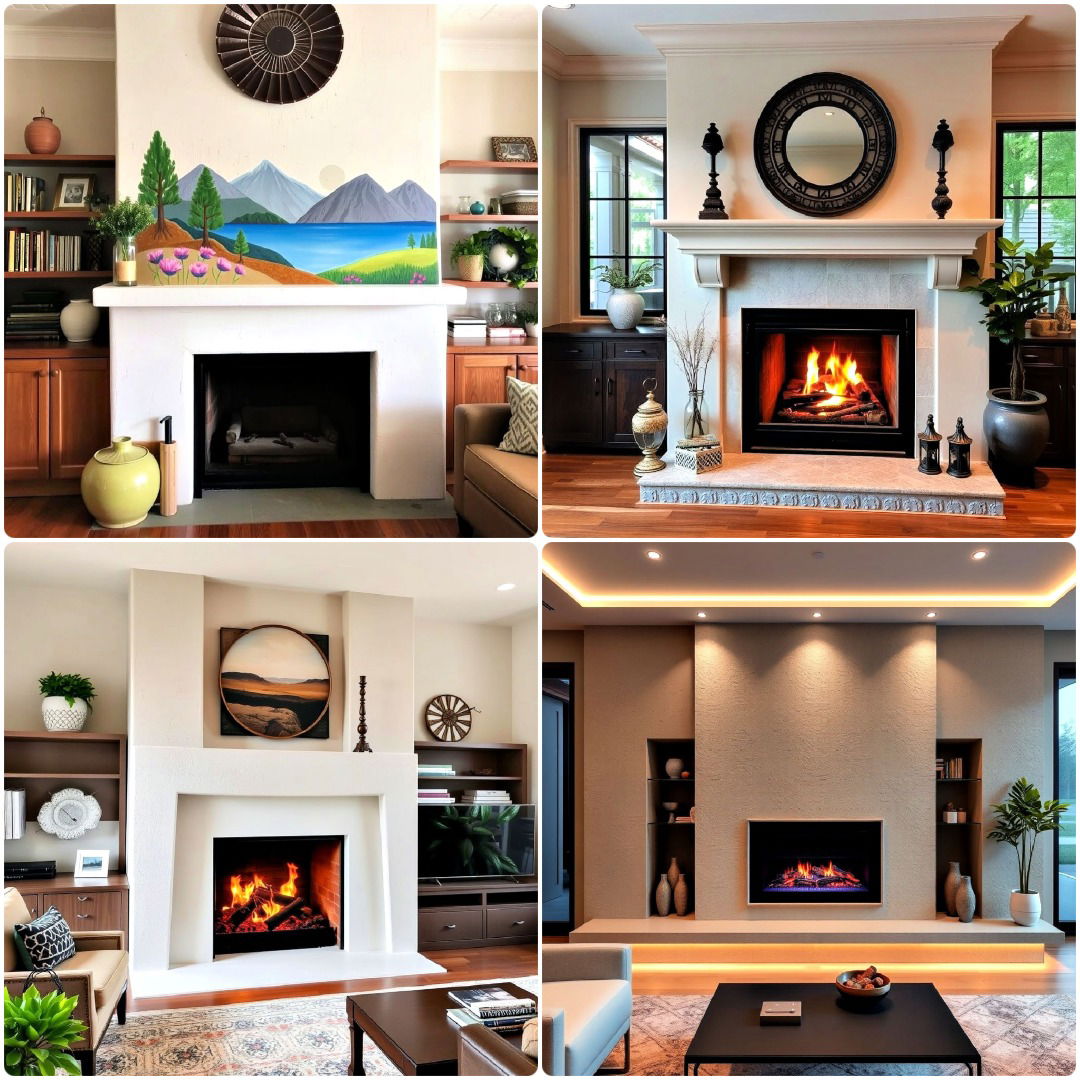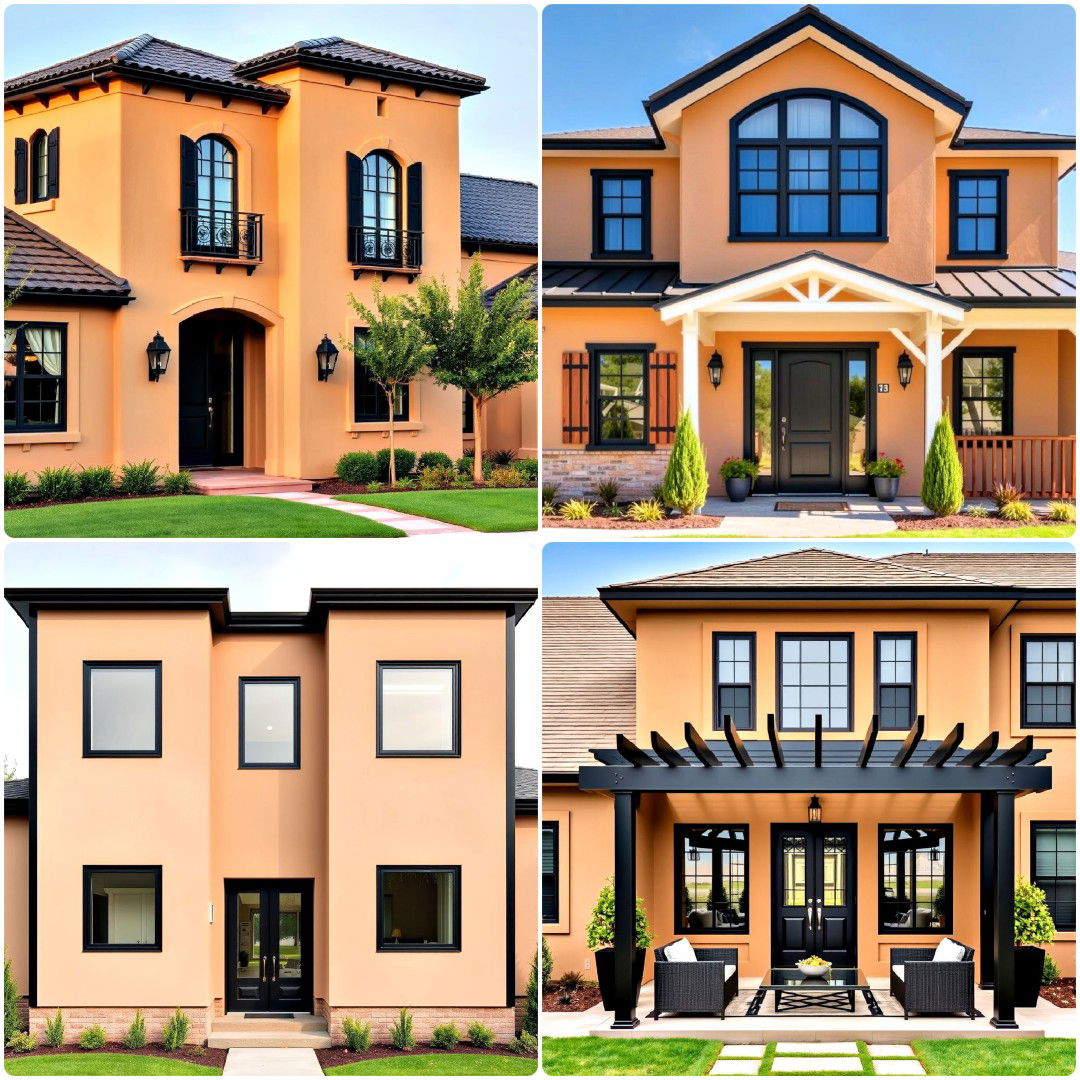Spanish Revival homes have a timeless charm that transports you to a world of rustic elegance and old-world sophistication. These homes embody a unique blend of Mediterranean, Moorish, and Spanish colonial influences, creating a rich architectural tapestry that feels warm, welcoming, and full of history. From their iconic red clay tile roofs to the intricate wrought iron details, every feature of these 40 inspiring Spanish revival homes speaks to a love for craftsmanship and a connection to nature. Whether you're drawn to the airy courtyards or the romantic arches, it's easy to see why Spanish Revival homes captivate the hearts of homeowners and designers alike.
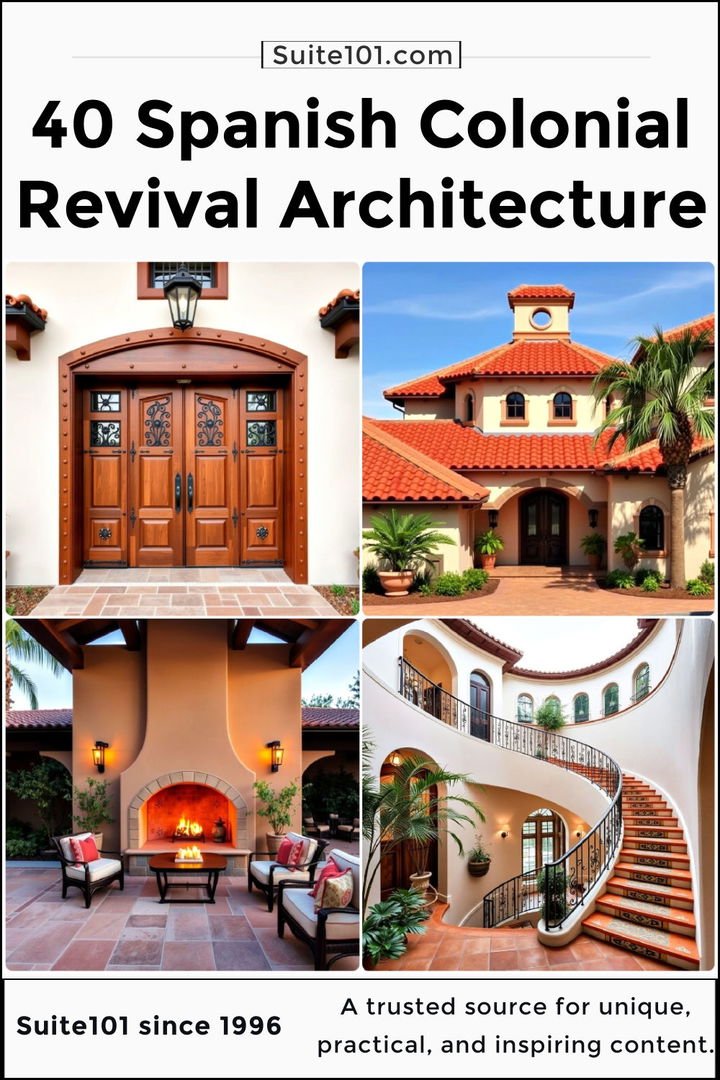
1. Red Clay Tile Roofs

One of the most iconic elements of Spanish Colonial Revival architecture is the use of red clay tiles for roofing. These tiles, with their rich terracotta color, bring a Mediterranean warmth to the structure while offering excellent durability in hot climates. Often arranged in a wave-like pattern, they also help in directing rainwater away from the house, making them both beautiful and functional. This roofing style instantly transports you to sun-drenched Spanish landscapes, giving your home a timeless, rustic charm.
2. White Stucco Walls
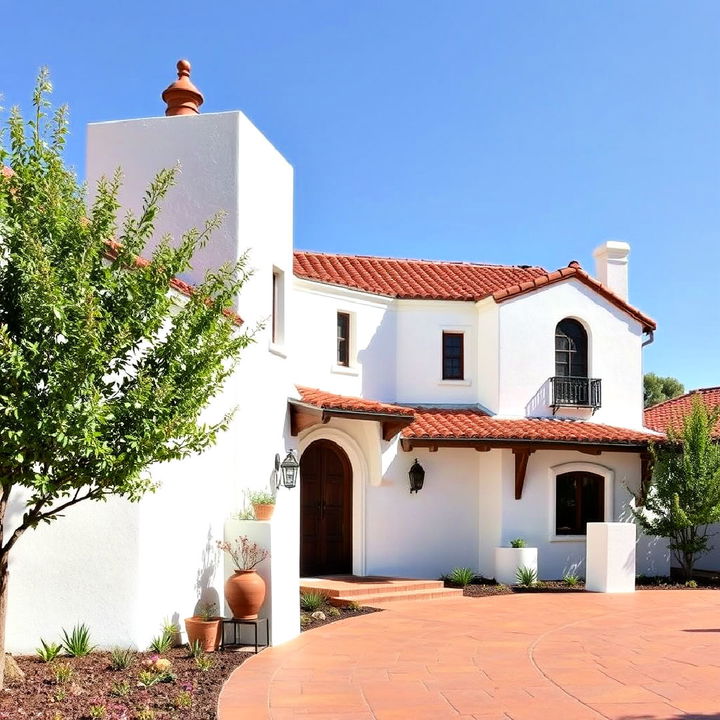
Bright white stucco walls are a hallmark of Spanish Colonial Revival homes. The smooth, clean surface reflects the sun’s light, helping keep the interior cooler in warmer climates. Beyond practical use, these walls provide a stunning contrast to the red clay roofs and dark wood accents often found in this style. Stucco’s adaptability to different shapes also allows for creative architectural features such as rounded corners or arched doorways, making it a versatile choice.
3. Arched Doorways and Windows
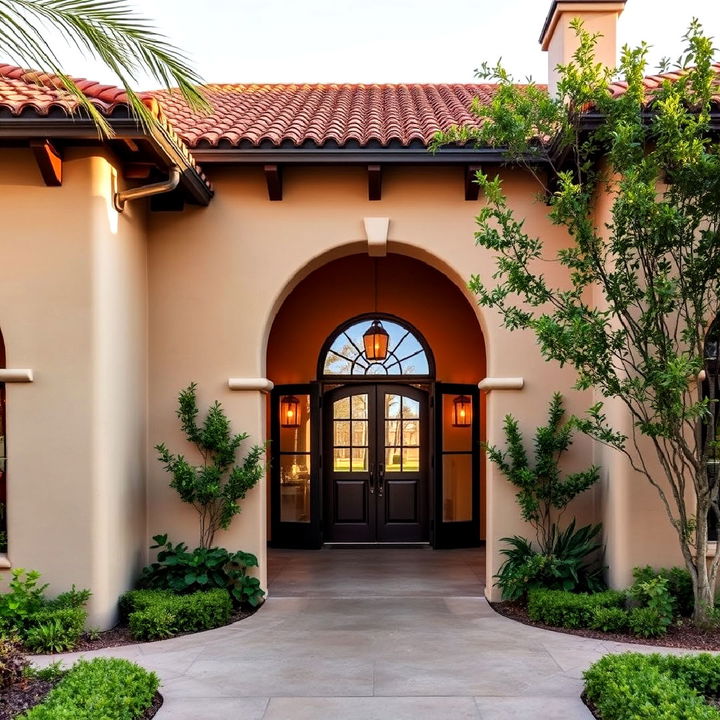
Explore beautiful Spanish Revival homes that blend traditional charm with modern elegance. Arched doorways and windows define the graceful, flowing aesthetic of Spanish Colonial Revival homes. This architectural element softens the otherwise rigid lines of the structure, evoking a sense of openness and elegance. These arches can be found inside and outside the home, often framing courtyards or entryways. Their curvature not only adds visual interest but also pays homage to traditional Spanish design, connecting your home to a rich cultural heritage.
4. Wrought Iron Detailing
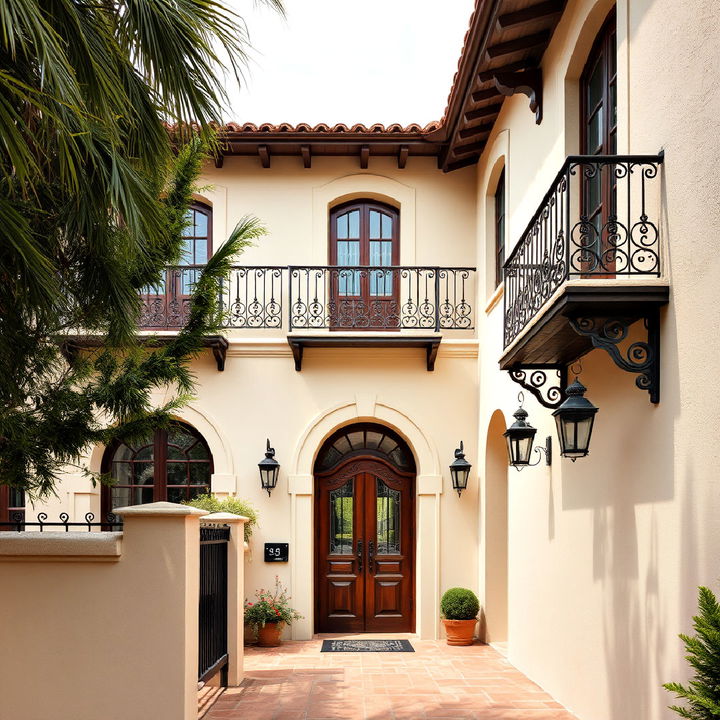
From railings to window grilles, wrought iron detailing is a common feature in Spanish Colonial Revival architecture. Its intricate designs contrast beautifully with the simplicity of stucco walls and arched openings, adding an element of craftsmanship to the overall structure. Wrought iron is often used in gates, balconies, and lanterns, offering both security and style. This metalwork adds a layer of texture and historic charm that complements the other traditional elements of the home.
5. Courtyards with Fountains
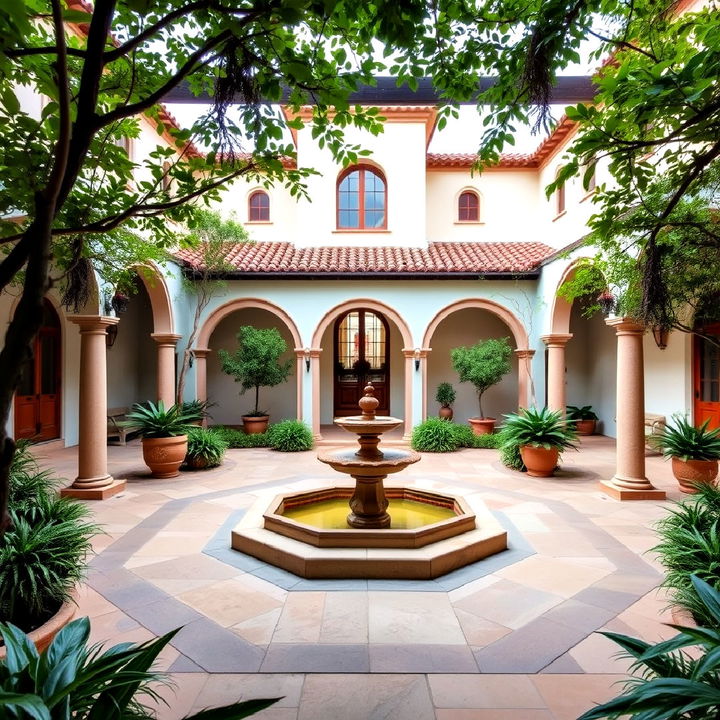
Spanish Colonial Revival homes often revolve around a central courtyard, serving as a peaceful retreat within the property. A fountain, typically located in the middle, becomes the focal point of the space, adding a tranquil sound of running water. These courtyards extend living spaces outdoors, providing a perfect spot for gatherings or quiet reflection. Surrounded by lush greenery, the courtyard’s combination of natural and architectural beauty enhances the home’s appeal.
6. Exposed Wooden Beams
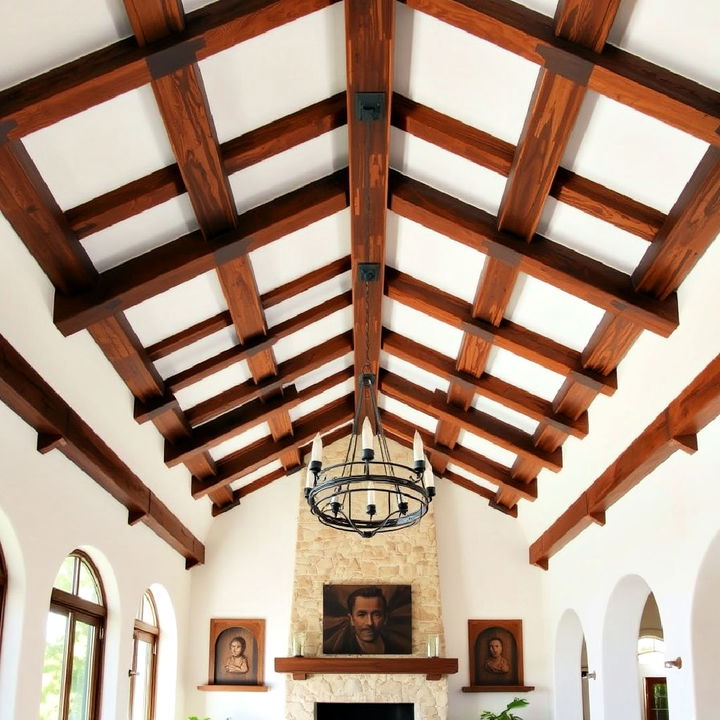
Exposed wooden beams add warmth and texture to the ceilings of Spanish Colonial Revival homes. Typically crafted from dark-stained wood, these beams contrast with the light-colored walls, creating a rustic yet refined interior aesthetic. Often seen in living rooms or dining areas, the beams lend a historic feel to the space, connecting it to the natural materials of traditional Spanish construction. Their bold, structural presence makes a lasting visual impact.
7. Colorful Tile Accents
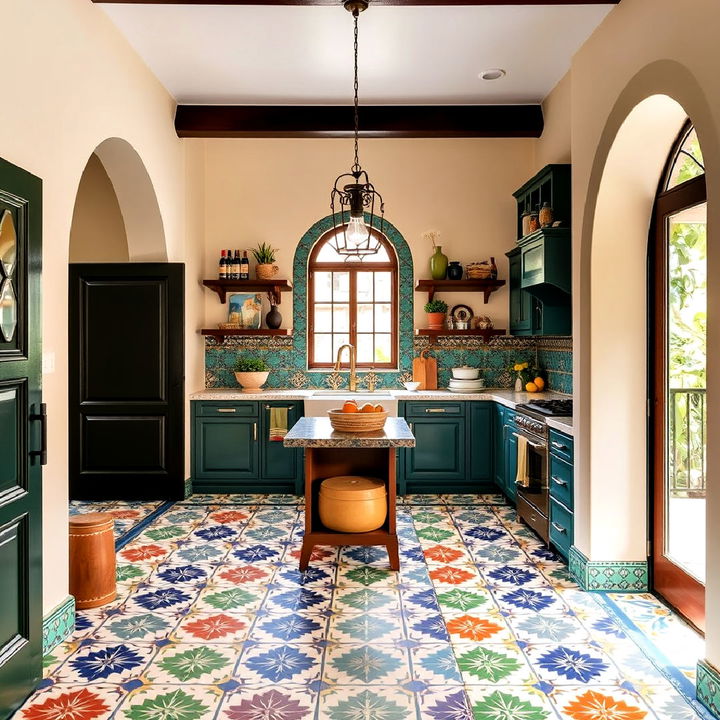
Colorful ceramic tiles, often in vibrant blues, greens, and yellows, are a signature feature of Spanish Colonial Revival homes. Used for flooring, stair risers, or even as decorative accents in kitchens and bathrooms, these tiles add a lively and artistic touch to the architecture. Their intricate patterns bring a handcrafted feel, evoking a sense of history and tradition. These tile accents offer endless customization opportunities while staying true to the home’s Spanish roots.
8. Barrel Vaulted Ceilings
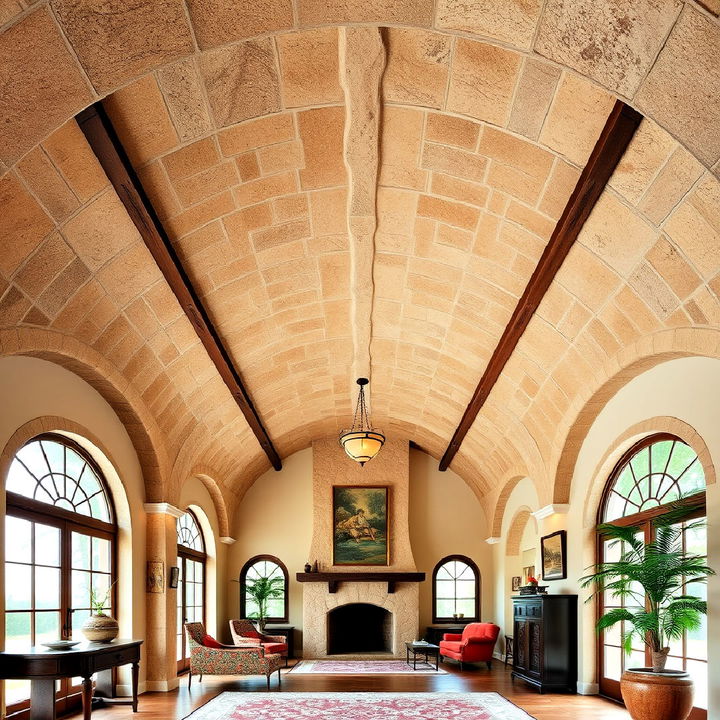
Barrel-vaulted ceilings bring grandeur and an old-world charm to interiors in Spanish Colonial Revival homes. These curved ceilings, often made of stone or brick, create a sense of spaciousness while drawing the eye upward. The vault can be accentuated with exposed wooden beams or simple lighting fixtures to further enhance its architectural beauty. This ceiling style not only adds height but also lends a soft, organic feel to the room.
9. Decorative Carved Woodwork
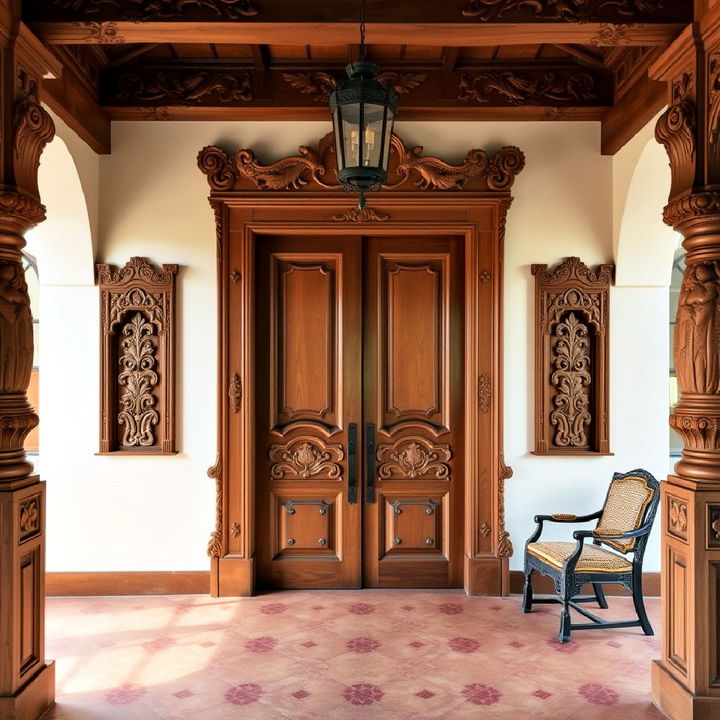
Discover the rich history of Spanish Colonial Revival architecture and its stunning designs. Intricate carved woodwork is a striking feature in many Spanish Colonial Revival homes. From heavy wooden doors to elaborately carved mantels, the use of detailed woodwork adds depth and texture to the home’s aesthetic. Often handcrafted, these pieces tell a story of artistry and tradition, connecting the home to its historical roots. This woodwork is commonly seen in both structural elements and furniture, offering a consistent theme of craftsmanship throughout the space.
10. Clay Tile Flooring

Clay tile flooring, often in earthy tones like terracotta or ochre, complements the overall warmth of a Spanish Colonial Revival home. These durable tiles can withstand the wear and tear of everyday use, making them both practical and beautiful. Their natural texture feels cool underfoot, perfect for warmer climates. Clay tiles are often arranged in geometric patterns, adding visual interest to otherwise simple spaces and grounding the home in its Mediterranean influences.
11. Low-Pitched Rooflines
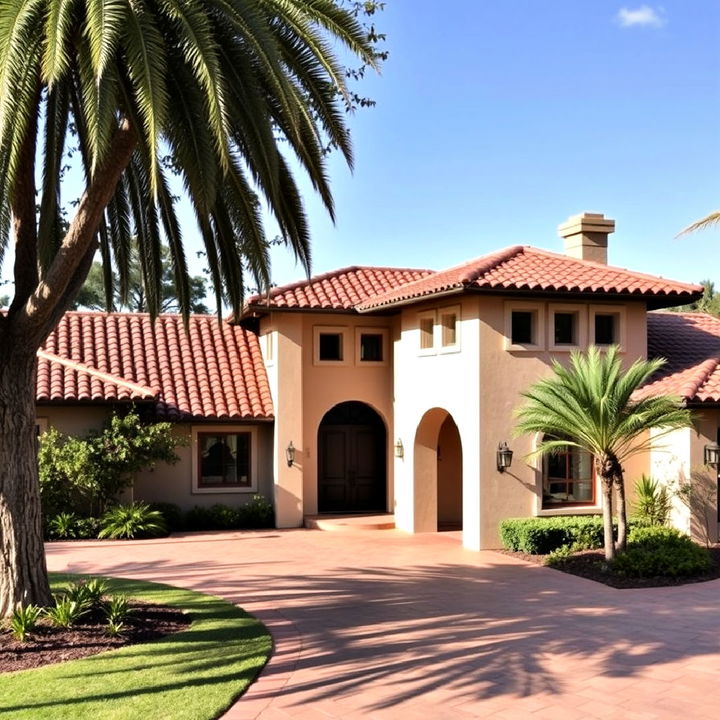
The low-pitched rooflines of Spanish Colonial Revival homes create a broad, sheltering look that is both practical and aesthetically pleasing. This design is ideal for hot, dry climates, allowing the roof to deflect the sun's rays while maintaining a low-profile silhouette. When paired with red clay tiles, these rooflines add to the overall horizontal emphasis of the architecture, blending the structure harmoniously with the landscape. It’s a timeless design element that embodies Mediterranean elegance.
12. Interior Arches and Niches
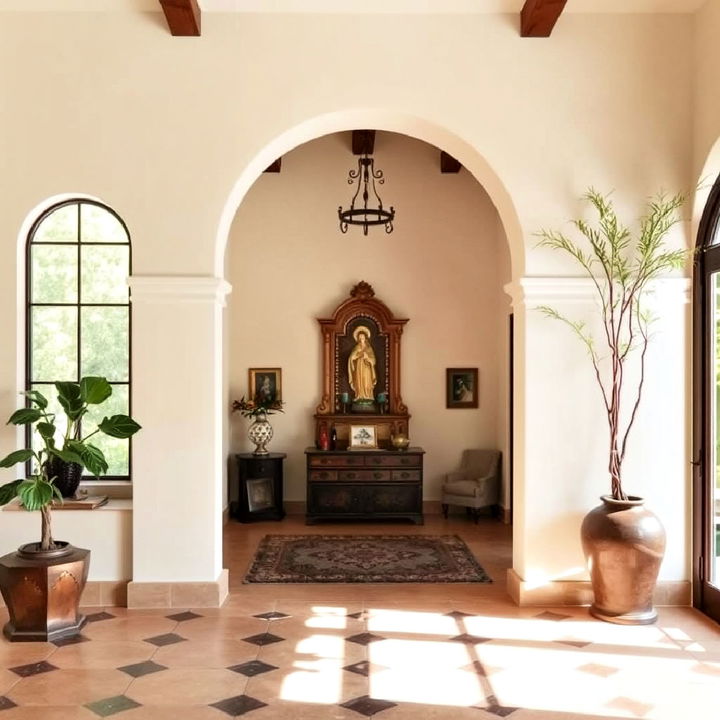
Interior arches and niches bring softness and charm to the inside of a Spanish Colonial Revival home. Whether framing doorways, windows, or creating small alcoves for art or religious icons, these architectural features add depth and character to the rooms. Niches, in particular, provide an opportunity for personalization, allowing homeowners to showcase treasured items. Their subtle curves mimic the flow of the exterior design, offering a cohesive and inviting atmosphere.
13. Tower Elements
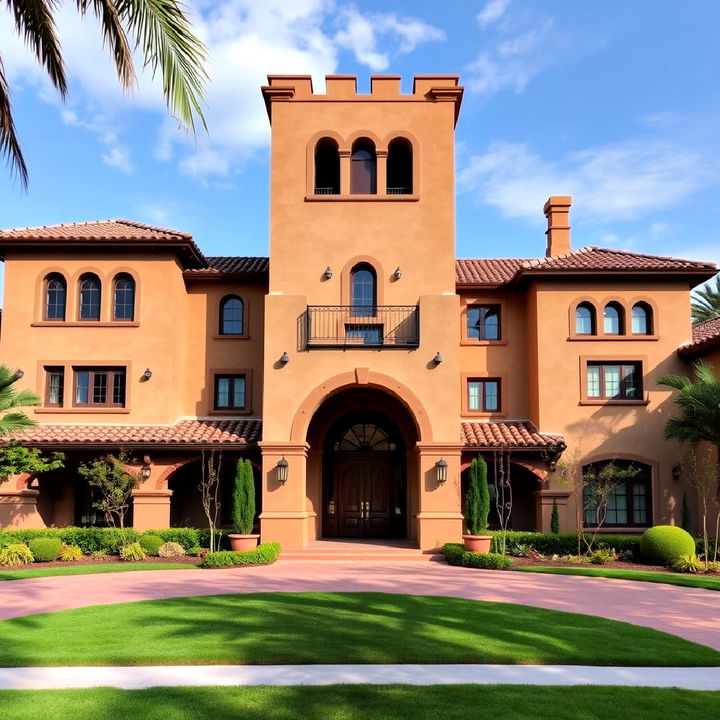
Some Spanish Colonial Revival homes include tower elements, often located at the front or center of the home. These towers serve as visual focal points, giving the home a castle-like appearance while providing functional space for staircases or observation decks. With arched windows or wrought iron detailing, towers enhance the grandeur of the structure. This feature is perfect for those seeking a dramatic statement in their home’s architecture.
14. Shaded Porches
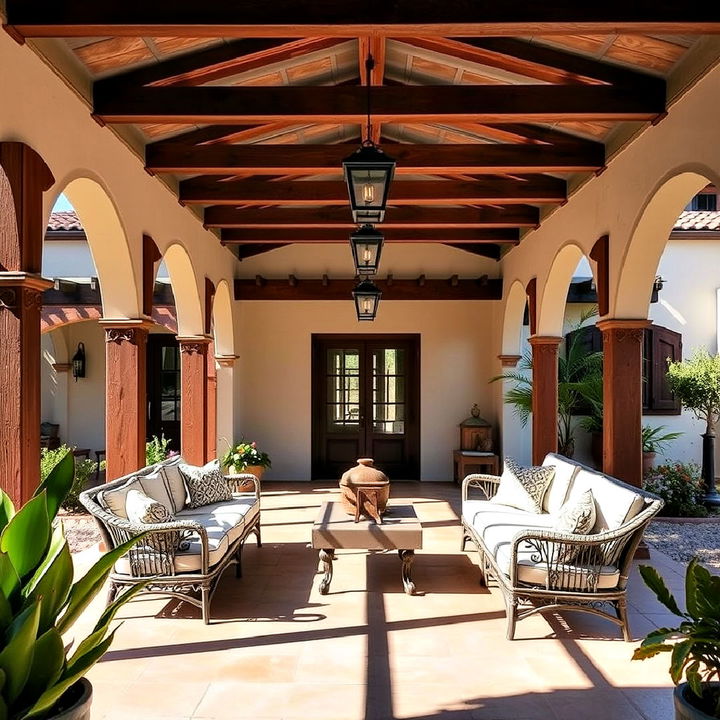
Shaded porches offer a cool respite from the sun in Spanish Colonial Revival homes. Often supported by wooden beams or columns, these porches extend living spaces outdoors while providing shelter from the elements. Furnished with comfortable seating or dining areas, they become ideal spaces for relaxation or entertaining. The porch’s connection to the garden or courtyard enhances the indoor-outdoor living experience, which is a key aspect of Mediterranean-inspired architecture.
15. Double Wooden Doors
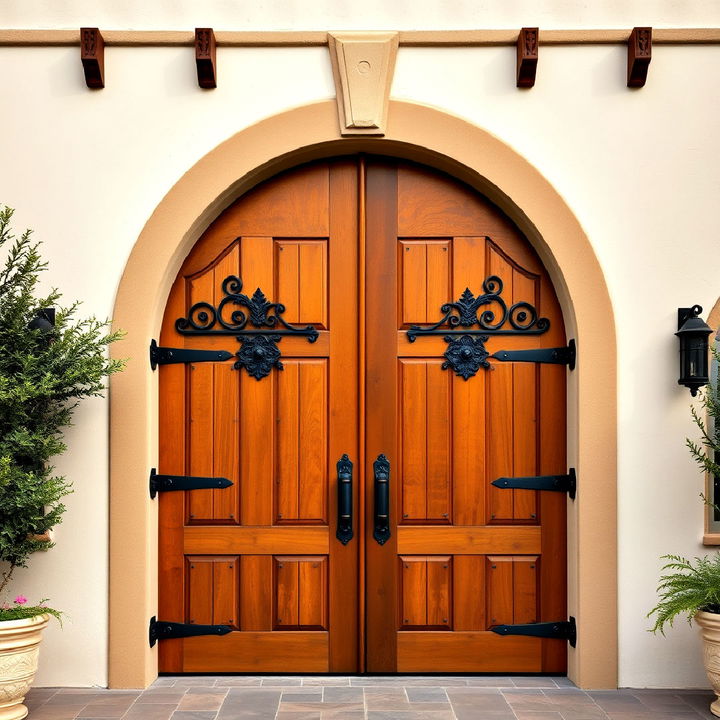
Get inspired by the timeless elegance of Spanish Revival style for your home. Double wooden doors, often grand in scale and detailed with wrought iron hardware, are a striking entrance feature of Spanish Colonial Revival homes. These doors create an impressive first impression, setting the tone for the rest of the architecture. Crafted from rich, dark wood and often hand-carved, they add both security and beauty to the home. The bold, rustic style of the doors contrasts with the light stucco walls, enhancing the overall aesthetic.
16. Painted Ceilings
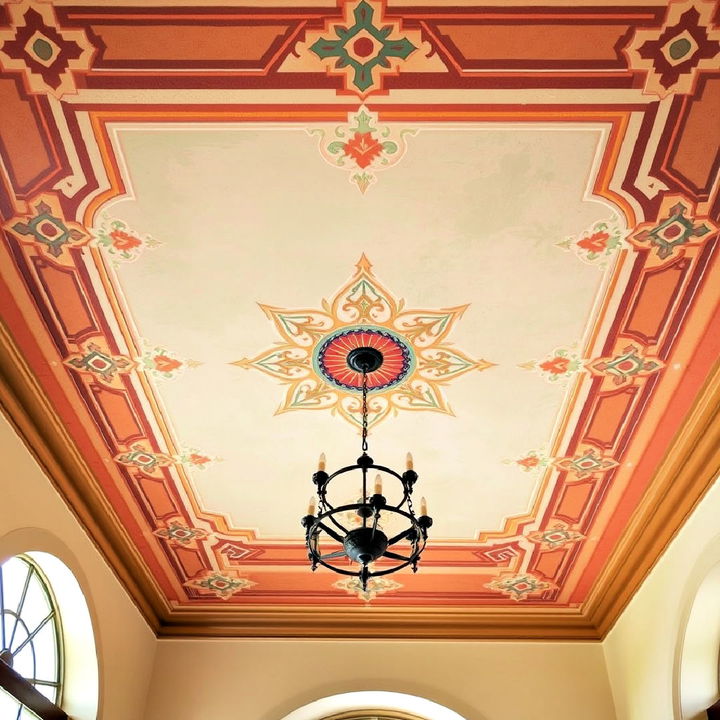
Painted ceilings, often adorned with intricate geometric or floral patterns, bring a touch of artistry to Spanish Colonial Revival interiors. This decorative element adds color and interest to otherwise plain ceilings, drawing the eye upward and enhancing the room’s overall ambiance. The hand-painted designs are often inspired by traditional Spanish motifs, blending history and creativity. Painted ceilings are a way to infuse a sense of uniqueness and craftsmanship into the home.
17. Thick Plaster Walls
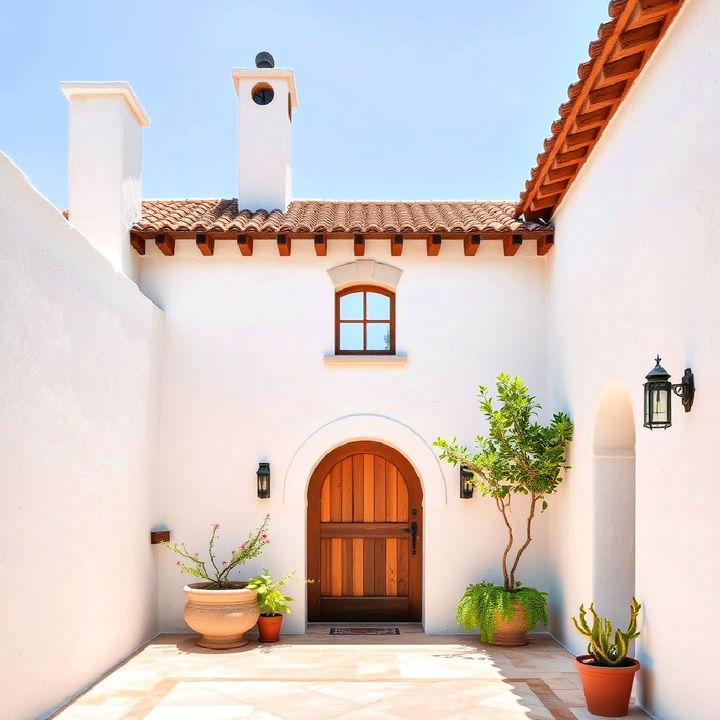
Thick plaster walls, often several inches deep, give Spanish Colonial Revival homes a sense of sturdiness and permanence. These walls, made of a mix of sand, lime, and water, are not only durable but also excellent at regulating indoor temperatures. Their rough, textured surface contrasts with the smoother architectural elements, creating a rustic feel that echoes traditional Spanish homes. These walls are typically painted white, amplifying the bright, sunlit spaces inside.
18. Pergolas with Vines
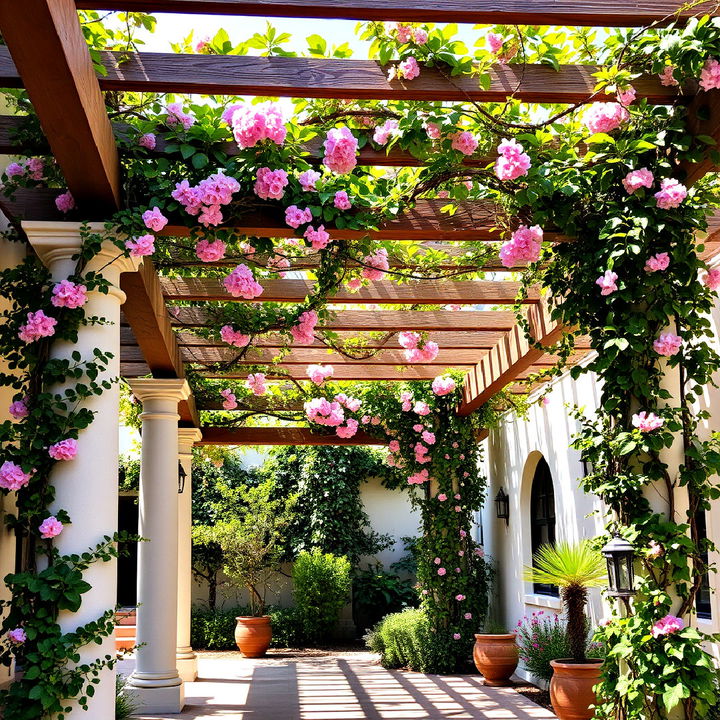
Pergolas covered in lush, climbing vines are a classic feature of Spanish Colonial Revival outdoor spaces. These wooden or stone structures provide a shaded area for relaxation while adding a touch of natural beauty to courtyards or patios. The intertwining vines, often featuring flowers like bougainvillea or jasmine, bring a fragrant and colorful element to the architecture. This creates an inviting outdoor retreat that feels connected to nature and tradition.
19. Decorative Tile Stair Risers
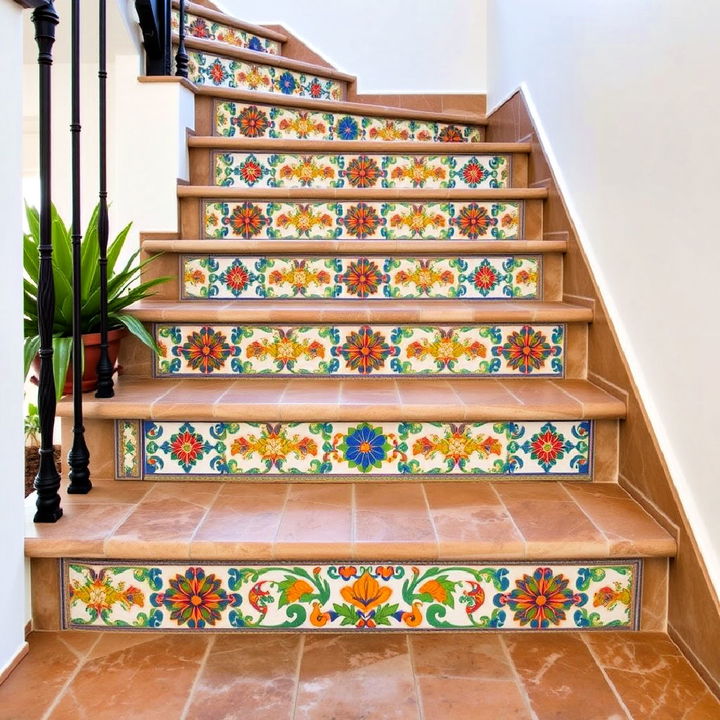
Decorative tile stair risers add a touch of color and personality to Spanish Colonial Revival homes. Each step features a unique hand-painted ceramic tile, typically in vibrant blues, greens, and yellows, which contrasts beautifully with natural wood or stone steps. This attention to detail transforms a functional staircase into a stunning design feature. The tiles often depict traditional Spanish motifs, creating a cohesive aesthetic throughout the home while offering a splash of creativity in unexpected places.
20. Large, Ornate Fireplaces
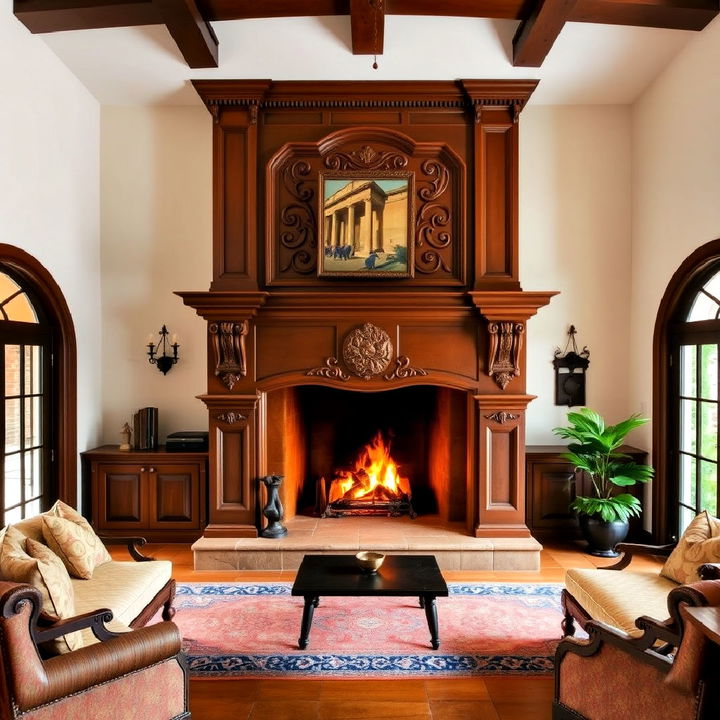
A large, ornate fireplace serves as the heart of many Spanish Colonial Revival living rooms. Often featuring intricate tile work, wrought iron accents, or carved wooden mantels, these fireplaces provide both warmth and a focal point for gathering. The fireplace is usually oversized, with a deep hearth, reflecting the traditional Spanish focus on communal spaces. Its detailed design contributes to the rustic charm of the home while anchoring the room with a bold, architectural statement.
21. Vaulted Ceiling with Exposed Rafters
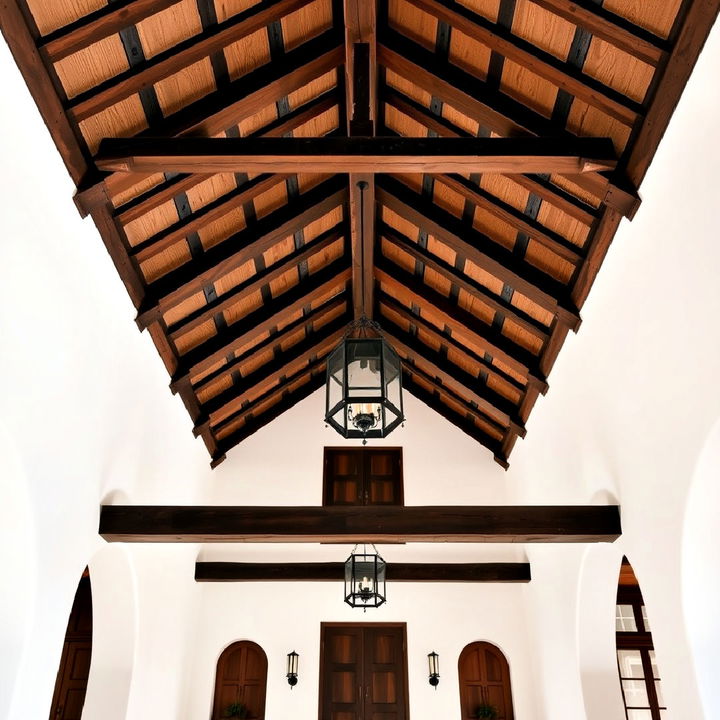
A vaulted ceiling with exposed rafters enhances the rustic elegance of Spanish Colonial Revival interiors. The beams, typically made of dark-stained wood, create a striking contrast against white plaster or stucco walls. This feature not only adds height and openness to a room but also echoes the traditional craftsmanship of early Spanish architecture. The interplay of shadow and texture from the rafters brings depth and warmth to the space, making it feel both grand and inviting.
22. Shuttered Windows
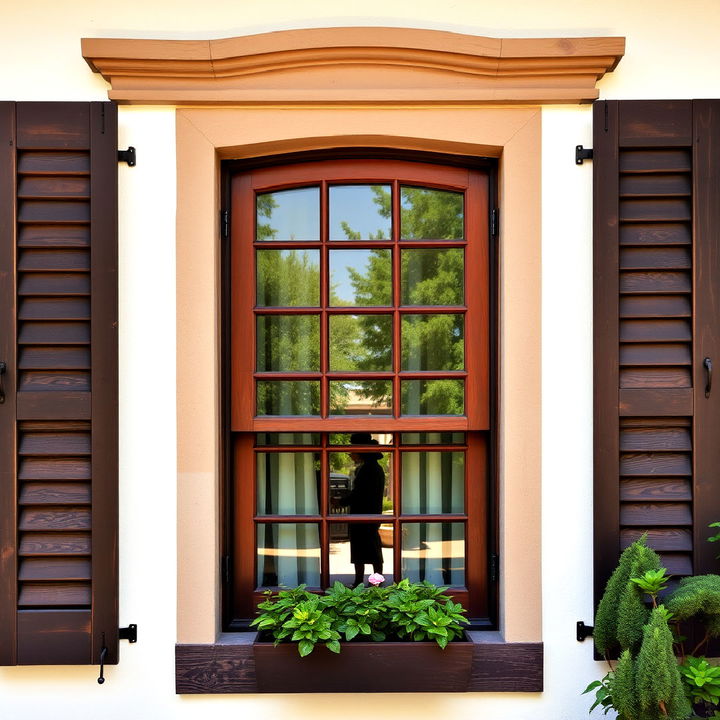
Learn about the key elements of Spanish-style architecture for a classic Mediterranean feel. Wooden shuttered windows are a practical and aesthetic element of Spanish Colonial Revival homes. These shutters, often made from rich, dark wood, provide privacy and protection from the sun while contributing to the rustic charm of the exterior. When closed, they add a layer of security, and when open, they frame the windows with a welcoming, old-world look. Shuttered windows also allow for natural ventilation, making them a functional addition in warmer climates.
23. Interior Courtyards

An interior courtyard brings the outdoors into the heart of Spanish Colonial Revival homes. This open-air space, often lined with tile flooring and surrounded by arches, serves as a private sanctuary for relaxation or dining. With the addition of a small fountain or lush greenery, it becomes a tranquil retreat, shielded from the outside world. The courtyard enhances natural light and ventilation throughout the home, embodying the seamless blend of indoor and outdoor living typical of Mediterranean architecture.
24. Moorish-Inspired Details
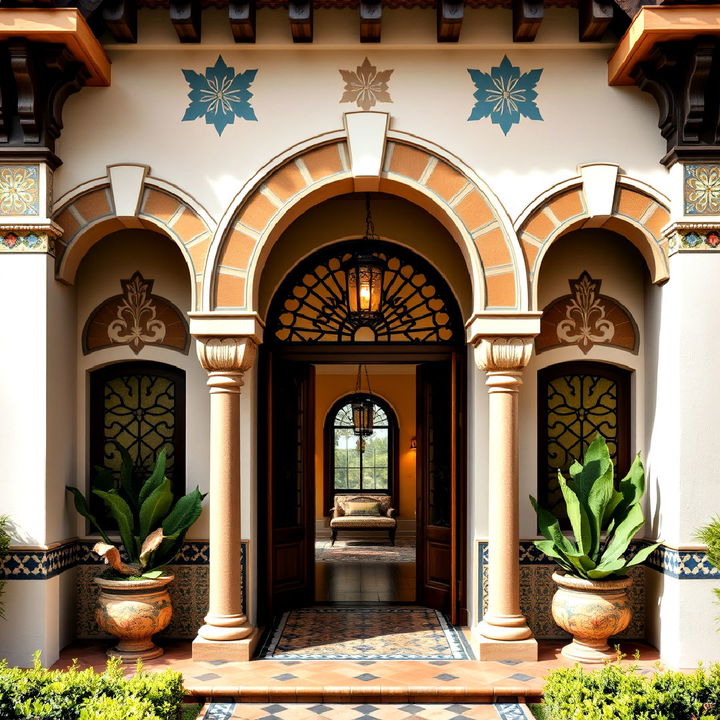
Moorish-inspired details, such as horseshoe arches, geometric tile patterns, and intricate ironwork, add an exotic flair to Spanish Colonial Revival homes. These elements pay homage to the Moorish influence on Spanish architecture, incorporating a rich blend of cultural motifs. Found in doorways, window frames, and decorative accents, these details elevate the design with their complexity and artistry. The integration of Moorish design creates a sense of history and global influence within the home’s aesthetic.
25. Tall, Narrow Windows
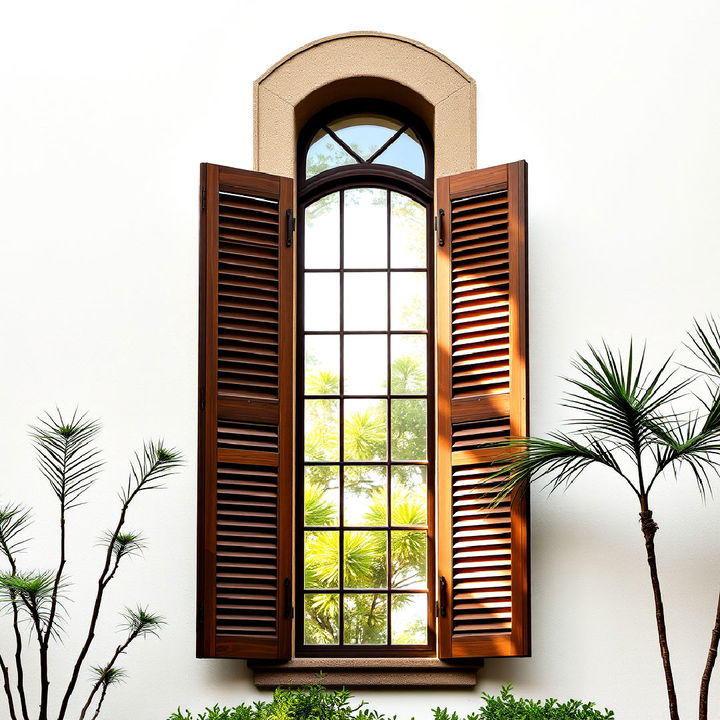
Tall, narrow windows are a distinctive feature of Spanish Colonial Revival homes, designed to allow light in while maintaining privacy and keeping interiors cool. Often framed by wooden shutters or wrought iron grilles, these windows provide a vertical emphasis that complements the home’s overall horizontal lines. Their narrow shape and placement often create striking patterns of light and shadow inside, adding depth and interest to the space.
26. Bell Towers
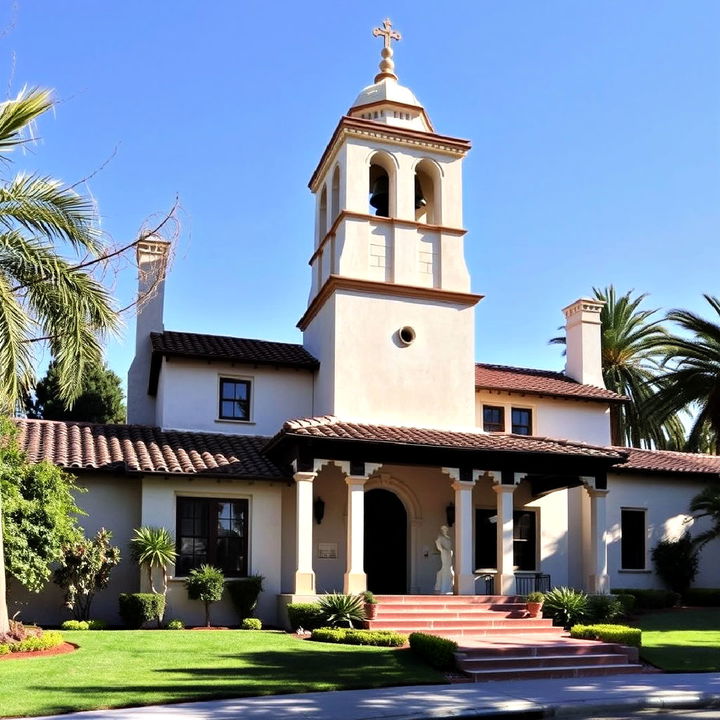
Bell towers, reminiscent of traditional Spanish missions, are a dramatic architectural feature in some Spanish Colonial Revival homes. These towers often rise above the main structure, creating a sense of verticality and prominence. They are sometimes functional, housing bells or providing a lookout point, but they are primarily a symbolic nod to the historical roots of Spanish architecture. The bell tower adds a bold and distinctive silhouette to the home, making it stand out in any neighborhood.
27. Thick Wooden Doors with Nailhead Detailing
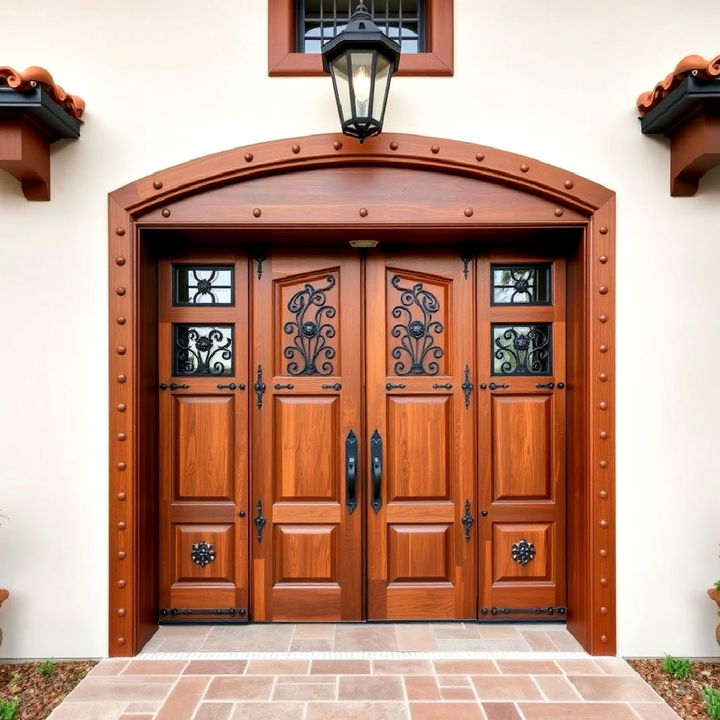
Thick wooden doors, often adorned with decorative nailhead detailing, create a robust and impressive entryway for Spanish Colonial Revival homes. These heavy doors are typically made from solid wood, such as oak or mahogany, and feature wrought iron accents or carved details. The nailhead trim, a common element in traditional Spanish doors, adds texture and historical character. These doors not only enhance the home’s security but also provide a grand entrance that sets the tone for the entire design.
28. Curved Staircases

Elevate your curb appeal with a striking Spanish Revival exterior design. Curved staircases are a graceful architectural feature found in many Spanish Colonial Revival homes. These sweeping staircases, often accented with wrought iron railings and decorative tile risers, create a sense of movement and elegance. The curvature adds fluidity to the home’s layout, breaking away from rigid, angular designs. Whether located indoors or leading to a courtyard or upper balcony, a curved staircase becomes a central design element that draws the eye and enhances the home’s Mediterranean charm.
29. Outdoor Fireplaces
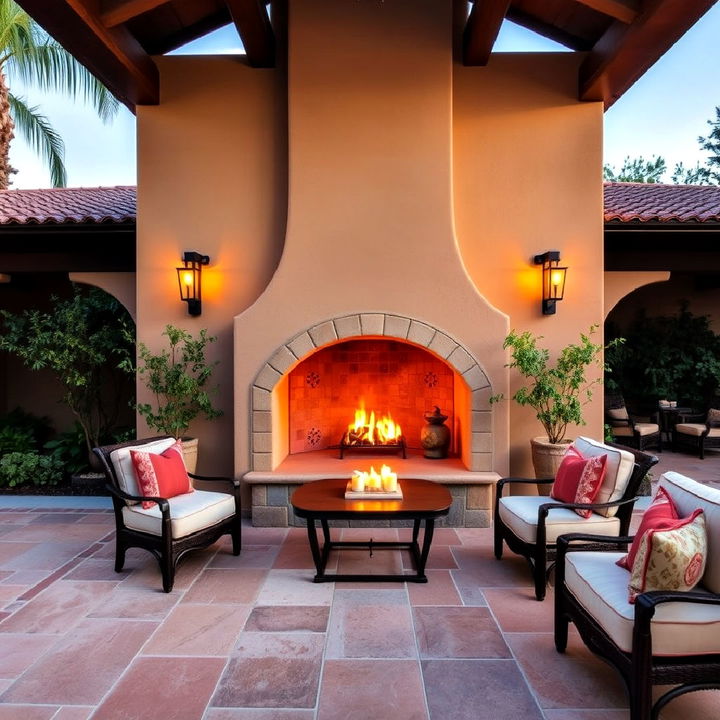
Outdoor fireplaces extend the warmth and hospitality of Spanish Colonial Revival homes into the garden or courtyard. These fireplaces, often built from stone or stucco, provide a cozy gathering spot for cool evenings. Decorated with colorful tile or topped with a simple chimney, they blend seamlessly with the home’s overall aesthetic. An outdoor fireplace encourages al fresco living, making it a perfect feature for those who love to entertain in a relaxed, inviting environment.
30. Spanish-Inspired Courtyard Gardens
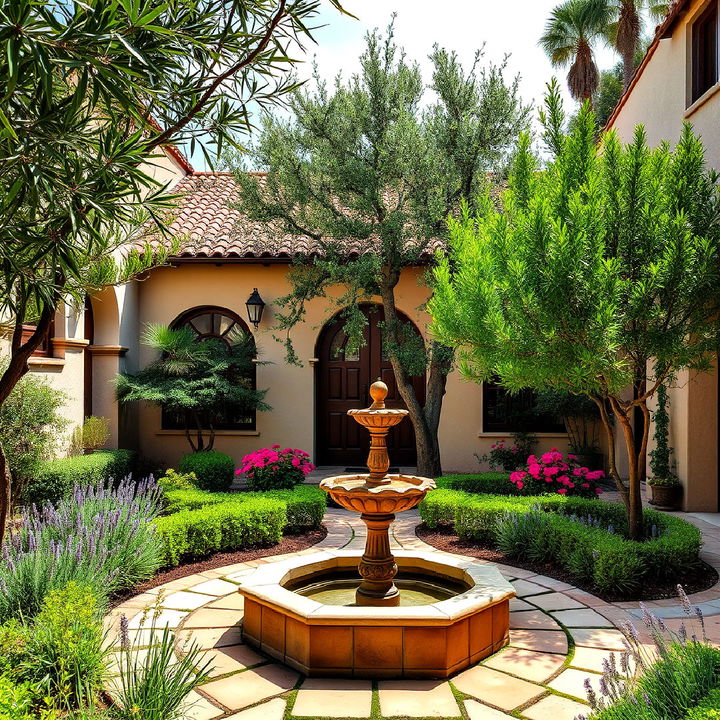
Courtyard gardens in Spanish Colonial Revival homes are designed to be lush, serene retreats. These gardens often feature Mediterranean plants like olive trees, lavender, and bougainvillea, which thrive in warmer climates. With the addition of a stone or tile fountain, the courtyard becomes a peaceful space for relaxation. The garden is typically enclosed by stucco walls, offering privacy and creating an intimate outdoor environment that complements the home’s focus on indoor-outdoor living.
31. Recessed Windows
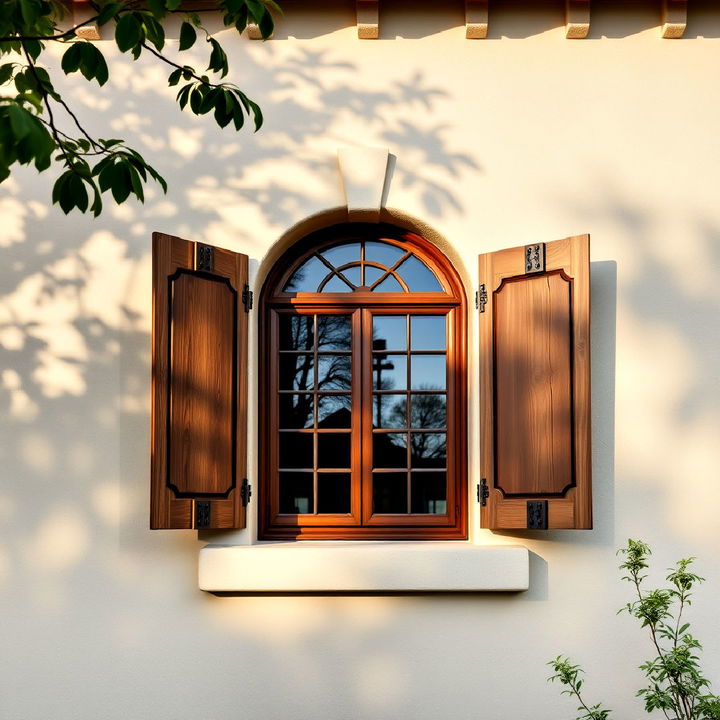
Recessed windows are a subtle yet impactful design element in Spanish Colonial Revival homes. Set deep within the thick stucco walls, these windows create an elegant shadow play and add depth to the exterior. The recessed placement provides natural insulation, helping to keep the home cool during hot weather. Often framed by wooden shutters or iron grilles, these windows enhance the rustic, old-world charm while providing a practical function.
32. Arched Alcoves for Artwork
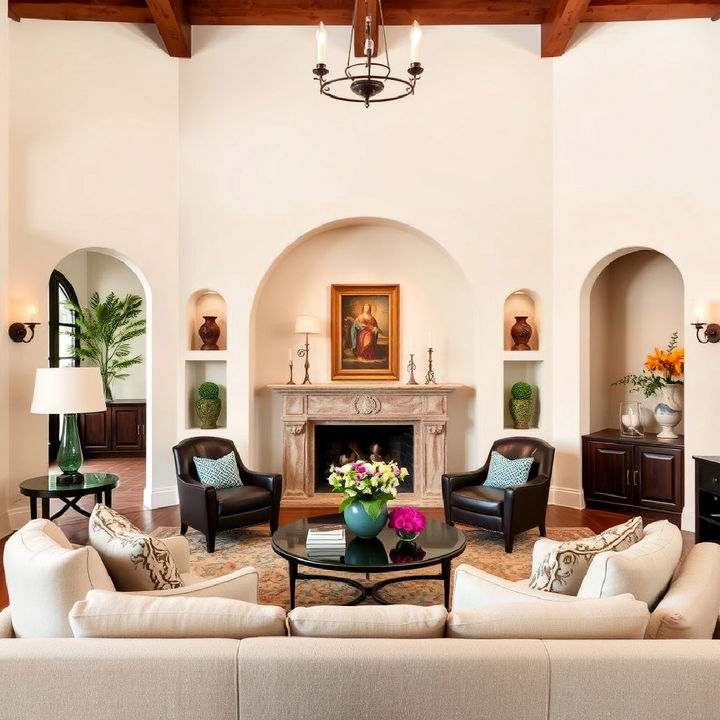
Arched alcoves, often found in hallways or living rooms, provide a perfect space to display artwork or religious items. These alcoves, typically set within thick stucco walls, echo the home’s overall architectural theme of arches and curves. By incorporating these niches into the design, homeowners can add personal touches while maintaining the cohesive style of the space. The alcoves draw attention to the displayed objects, creating a thoughtful and artistic focal point.
33. Brick Detailing
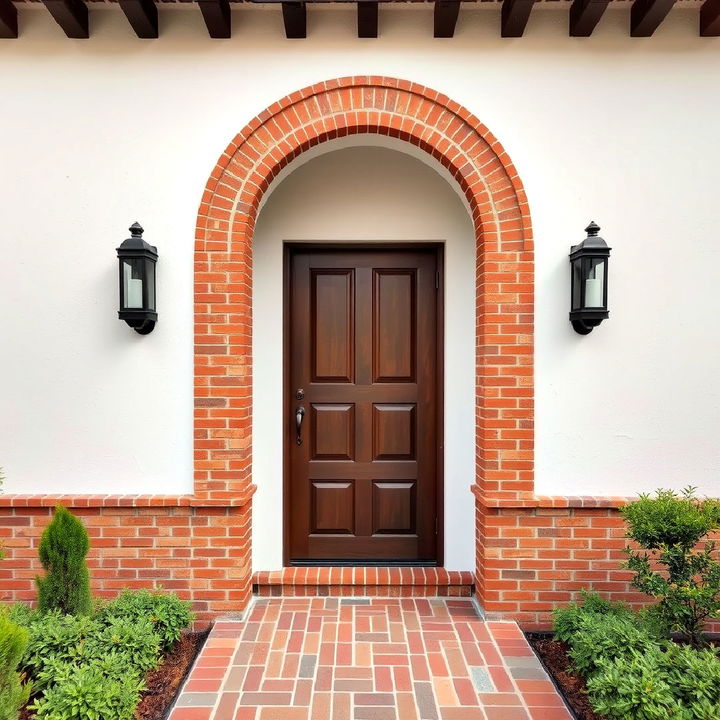
Brick detailing, often seen around windows, doors, or arches, adds texture and craftsmanship to Spanish Colonial Revival homes. The warm, earthy tones of the bricks contrast beautifully with the white stucco walls, creating a rich visual appeal. These bricks may be arranged in intricate patterns or used sparingly as accents, but either way, they contribute to the rustic, hand-crafted aesthetic that defines this architectural style. Brickwork adds a layer of historical authenticity to the home.
34. Decorative Cornices
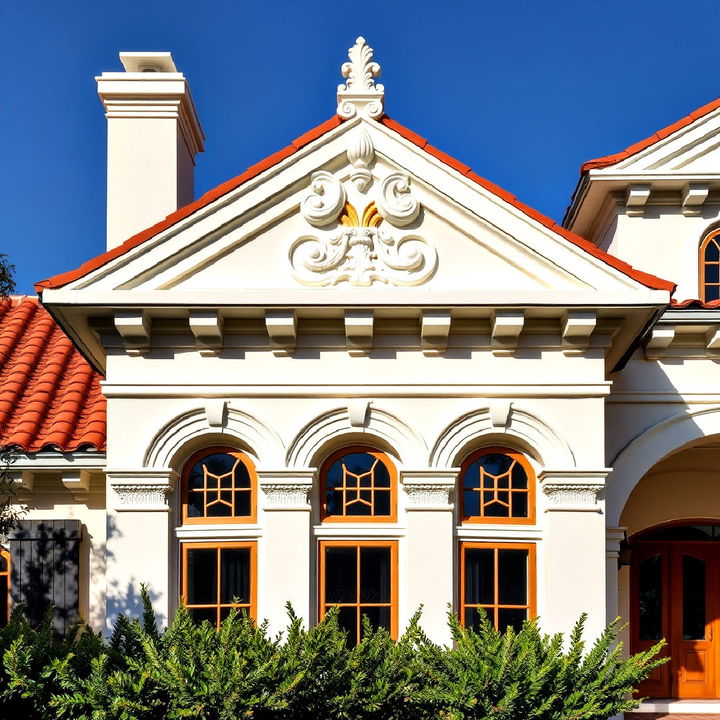
Decorative cornices, typically placed at the roofline or around windows and doors, enhance the architectural details of Spanish Colonial Revival homes. These cornices, often made from plaster or stone, feature intricate carvings or molded designs that add elegance to the structure. Their placement along the roofline also serves a functional purpose, helping to direct rainwater away from the walls. Cornices are a refined touch that elevates the overall aesthetic, blending beauty with function.
35. Open-Air Loggias
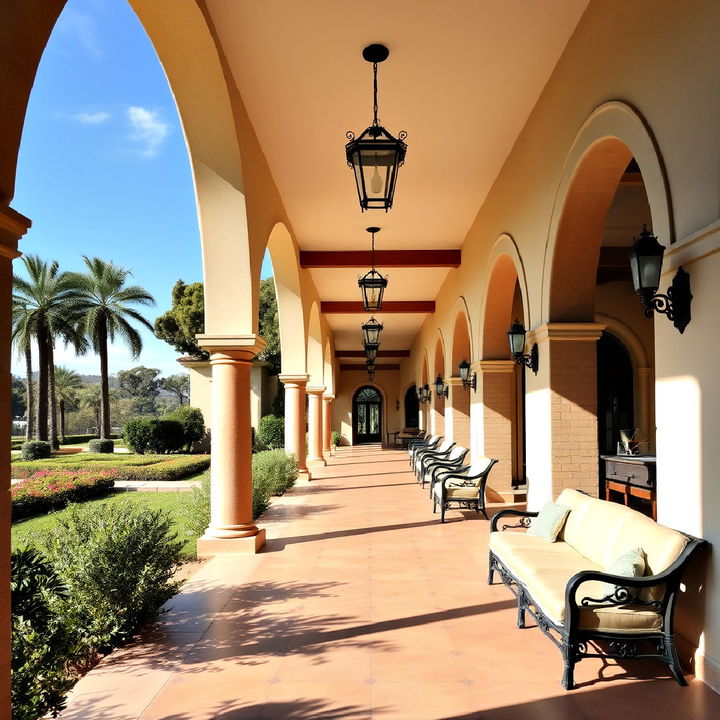
An open-air loggia, or covered gallery, is a key feature in many Spanish Colonial Revival homes. These long, shaded walkways, supported by arches or columns, provide a seamless transition between indoor and outdoor spaces. Furnished with comfortable seating or dining areas, loggias offer a cool, shaded retreat for relaxation or entertaining. The open design allows for natural ventilation and light, while the architectural details, such as arches or tile floors, create a visually appealing space.
36. Clay Chimney Pots

Clay chimney pots are an ornamental and functional feature found in Spanish Colonial Revival homes. These pots, placed on top of chimneys, help to enhance the airflow while adding a decorative element to the roofline. Often crafted in traditional shapes and left in their natural terracotta color, they complement the clay roof tiles and add a rustic, Mediterranean flair to the home’s exterior. Chimney pots are a small but distinctive detail that enhances the historical authenticity of the architecture.
37. Ornate Stair Railings
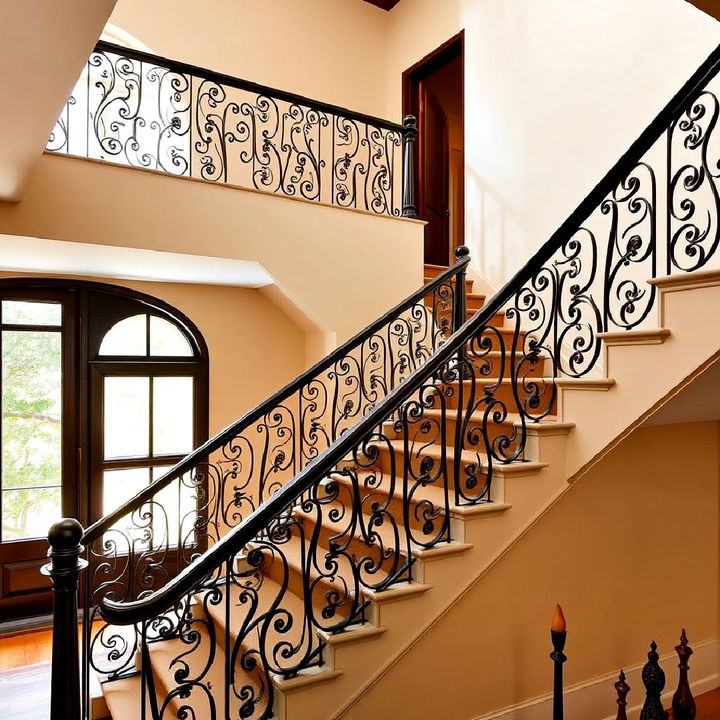
Ornate stair railings, often made from wrought iron, add an element of artistry to both indoor and outdoor staircases in Spanish Colonial Revival homes. The intricate scrollwork or geometric patterns of the ironwork contrast beautifully with the smooth stucco walls or tiled stair risers. These railings not only provide safety but also serve as a decorative feature, enhancing the overall design of the staircase. Their handcrafted quality brings a sense of old-world craftsmanship to the home.
38. Large Archways Connecting Rooms

Find charming and classic Spanish Revival houses to inspire your next home project. Large archways connecting rooms create a sense of flow and openness in Spanish Colonial Revival homes. These expansive arches, often framed in wood or stucco, break up rigid spaces while maintaining a cohesive design. By eliminating doors and replacing them with arches, the home feels more connected and expansive. The arches also allow natural light to travel through the spaces, enhancing the home’s airy, Mediterranean feel.
39. Stone Courtyard Pavers
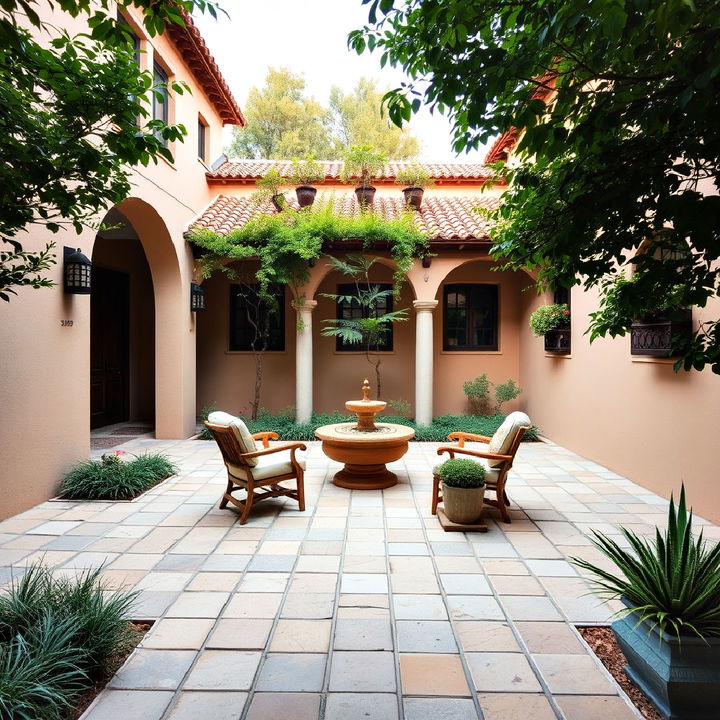
Stone pavers in the courtyard or patio area add a rustic, durable flooring option for outdoor spaces in Spanish Colonial Revival homes. The natural stone, often in warm earth tones, complements the stucco walls and lush greenery typically found.
40. Clay Roof Eaves
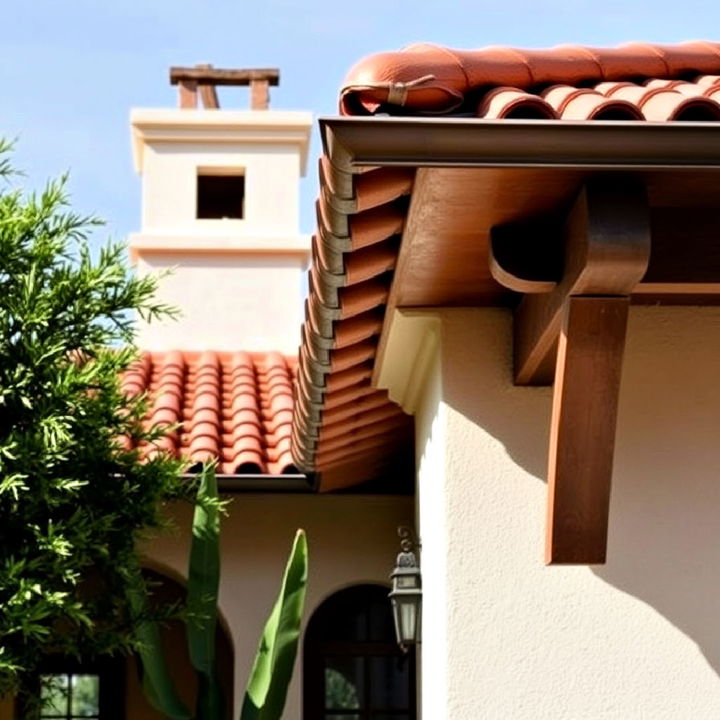
The roof eaves in Spanish Colonial Revival homes often feature exposed clay tiles, creating a striking edge to the roofline. These overhanging eaves not only provide shade and protection from the elements but also add a decorative touch to the home’s exterior. The layering of the clay tiles, sometimes capped with wrought iron brackets, complements the rustic and handcrafted feel of the architecture. The eaves are both functional and beautiful, enhancing the Mediterranean essence of the design.
Conclusion:
Spanish Revival homes seamlessly blend historic elegance with modern comfort, making them a beloved architectural style for those seeking a home that feels both timeless and full of character. From iconic red clay roofs to ornate fireplaces and lush courtyards, every element reflects a dedication to craftsmanship and detail. Whether you're drawn to the warmth of exposed wooden beams or the charm of arched doorways, these homes continue to inspire and enchant. If you're searching for architectural inspiration that offers both beauty and durability, Spanish Revival homes stand as a perfect blend of tradition and timeless appeal.
Key Takeaways:
- Distinctive Red Clay Tile Roofs: A hallmark of Spanish Revival architecture, these roofs are both functional and aesthetically pleasing.
- White Stucco Walls: Clean, bright, and durable, these walls give homes a classic and timeless appearance.
- Arched Doorways and Windows: The use of arches creates soft, flowing lines that add elegance and a sense of grandeur.
- Wrought Iron Detailing: This intricate craftsmanship adds a touch of rustic beauty, often found in balconies, railings, and gates.
- Courtyards with Fountains: Central to the design, courtyards offer a serene outdoor space, bringing in natural light and air.
- Exposed Wooden Beams: These add warmth and a natural element to interiors, reflecting the craftsmanship typical of Spanish Revival homes.
- Colorful Tile Accents: Vibrant tiles often adorn stair risers, walls, and floors, adding bold pops of color and pattern.
What to Do Next:
Explore more examples of Spanish Revival architecture, focusing on how these key elements are used in various homes. Consider incorporating some of these features into your own home design for a touch of classic elegance. You can also look for local architects or builders specializing in this style if you're planning a renovation or new construction.

